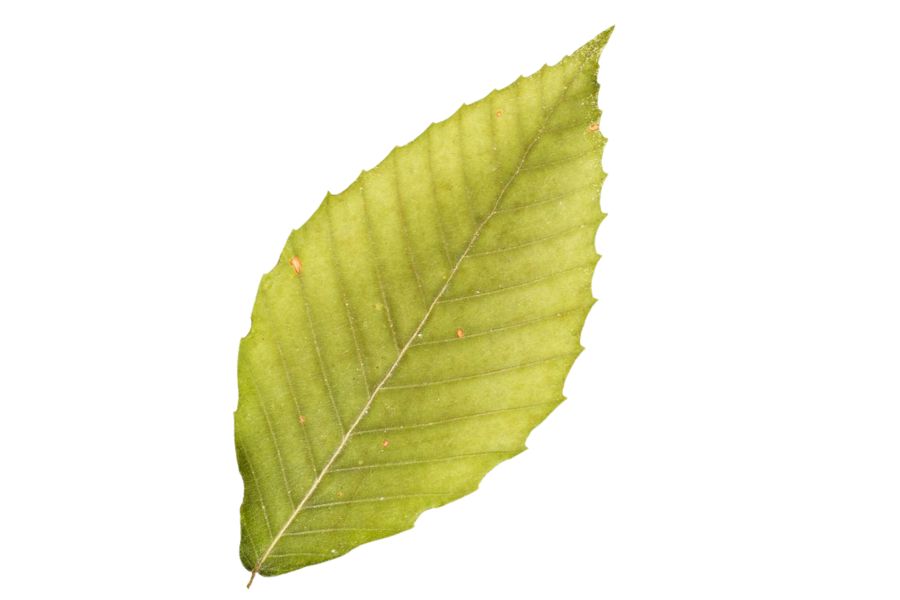The forests and fields of West Virginia hide natural food that you can gather for free. Wild berries, nuts, and leafy greens grow throughout the state. Learning to identify these plants connects you to the land while providing fresh ingredients for your kitchen.
Foraging builds skills that people in Appalachia have practiced for generations. Your grandparents or great-grandparents likely knew which plants were safe to eat and when to collect them. This traditional knowledge helped families through tough times and added variety to meals.
Safety matters most when collecting wild foods. Learn to identify plants correctly before eating them. Some edible plants look similar to poisonous ones. Start with easy plants like blackberries or dandelions that most people recognize.
Let me show you what grows wild in West Virginia and how to find these natural foods safely.
What We Cover In This Article:
- The Edible Plants Found in the State
- Toxic Plants That Look Like Edible Plants
- How to Get the Best Results Foraging
- Where to Find Forageables in the State
- Peak Foraging Seasons
- The extensive local experience and understanding of our team
- Input from multiple local foragers and foraging groups
- The accessibility of the various locations
- Safety and potential hazards when collecting
- Private and public locations
- A desire to include locations for both experienced foragers and those who are just starting out
Using these weights we think we’ve put together the best list out there for just about any forager to be successful!
A Quick Reminder
Before we get into the specifics about where and how to find these plants and mushrooms, we want to be clear that before ingesting any wild plant or mushroom, it should be identified with 100% certainty as edible by someone qualified and experienced in mushroom and plant identification, such as a professional mycologist or an expert forager. Misidentification can lead to serious illness or death.
All plants and mushrooms have the potential to cause severe adverse reactions in certain individuals, even death. If you are consuming wild foragables, it is crucial to cook them thoroughly and properly and only eat a small portion to test for personal tolerance. Some people may have allergies or sensitivities to specific mushrooms and plants, even if they are considered safe for others.
The information provided in this article is for general informational and educational purposes only. Foraging involves inherent risks.
The Edible Plants Found in the State
Wild plants found across the state can add fresh, seasonal ingredients to your meals:
Ramps (Allium tricoccum)
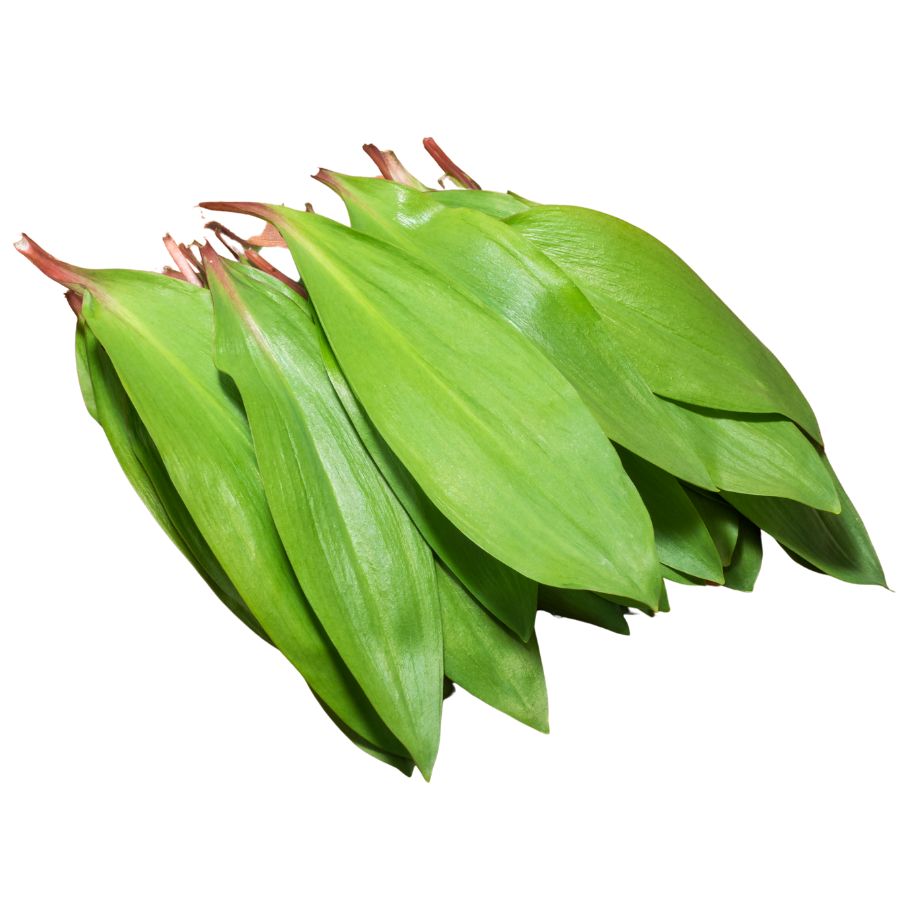
Known as wild leek, ramp, or ramson, this flavorful plant is famous for its broad green leaves and slender white stems. It grows low to the ground and gives off a strong onion-like scent when bruised, which can help you tell it apart from toxic lookalikes like lily of the valley.
If you give it a taste, you will notice a bold mix of onion and garlic flavors, with a tender texture that softens even more when cooked. People often sauté the leaves and stems, pickle the bulbs, or blend them into pestos and soups.
The entire plant can be used for cooking, but the leaves and bulbs are the most prized parts. It is important not to confuse it with similar-looking plants that do not have the signature onion smell when crushed.
Wild leek populations have declined in some areas because of overharvesting, so it is a good idea to only take a few from any given patch. When harvested thoughtfully, these vibrant greens can add a punch of flavor to just about anything you make.
Spicebush (Lindera benzoin)
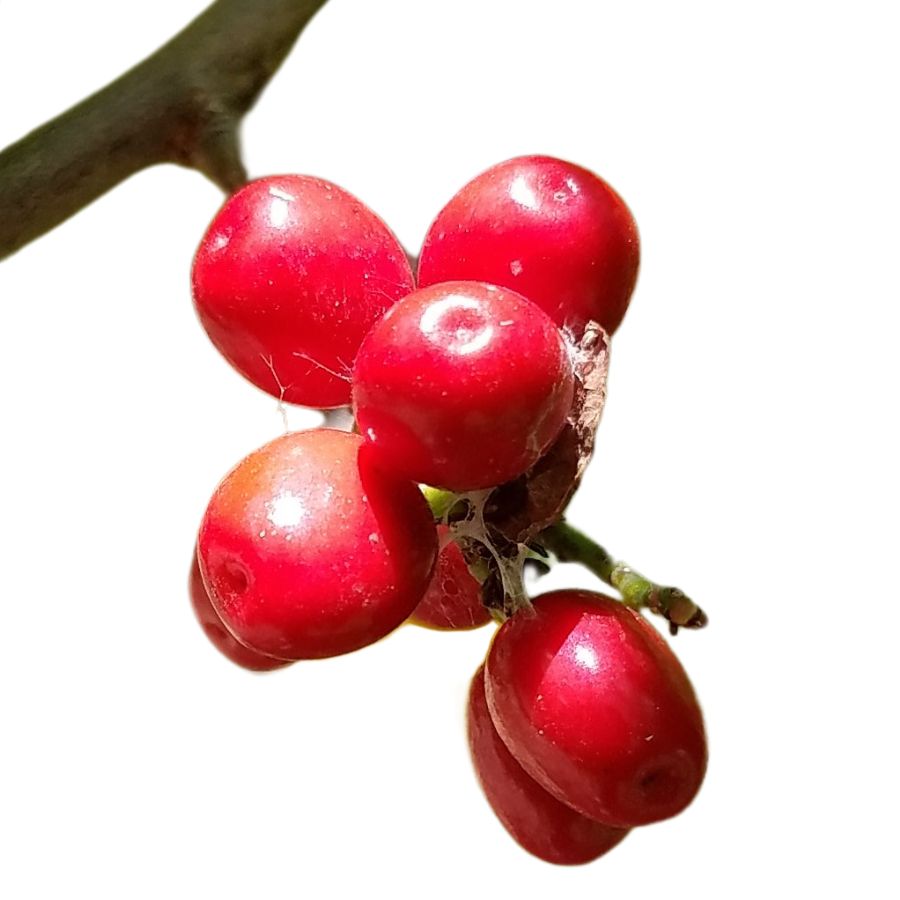
Spicebush has smooth-edged leaves that release a spicy citrus scent when crushed, and it produces clusters of red berries that grow close to the stem. Those berries, along with the young twigs and leaves, are all edible and flavorful.
The berries are especially valued for their warm, peppery kick and are often dried and ground as a seasoning. You can steep the leaves and twigs into tea or simmer them into broths.
Avoid confusing it with lookalikes like Carolina allspice, which has larger, thicker leaves and lacks the same aromatic quality. Its berries also differ in size and internal seed structure.
Spicebush has a long history of use in traditional cooking for its mild numbing effect and warming flavor. Only the berries, leaves, and tender twigs should be consumed—avoid the bark and roots.
Jerusalem Artichoke (Helianthus tuberosus)
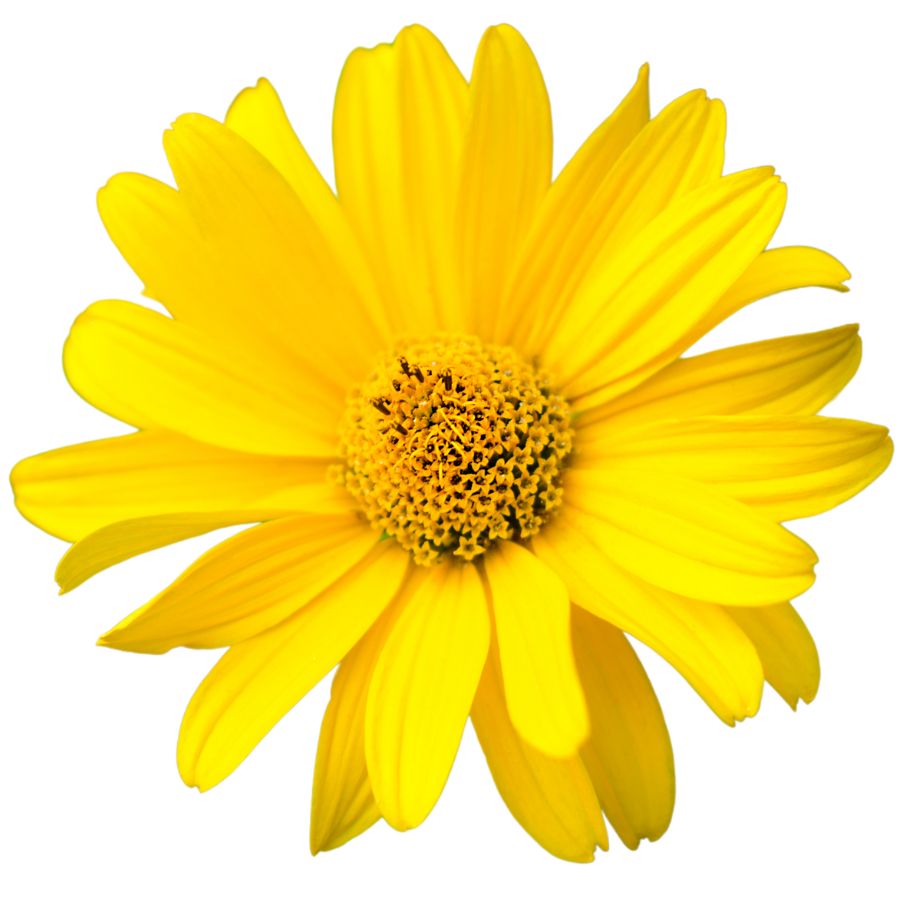
Jerusalem artichoke grows tall with sunflower-like blooms and has knobby underground tubers. The tubers are tan or reddish and look a bit like ginger root, though they belong to the sunflower family.
The part you’re after is the tuber, which has a nutty, slightly sweet flavor and a crisp texture when raw. You can roast, sauté, boil, or mash them like potatoes, and they hold their shape well in soups and stir-fries.
Some people experience gas or bloating after eating sunchokes due to the inulin they contain, so it’s a good idea to try a small amount first. Cooking them thoroughly can help reduce the chances of digestive discomfort.
Sunchokes don’t have many dangerous lookalikes, but it’s important not to confuse the plant with other sunflower relatives that don’t produce tubers. The above-ground part resembles a small sunflower, but it’s the knotted, underground tubers that are worth digging up.
Wild Grape (Vitis riparia)
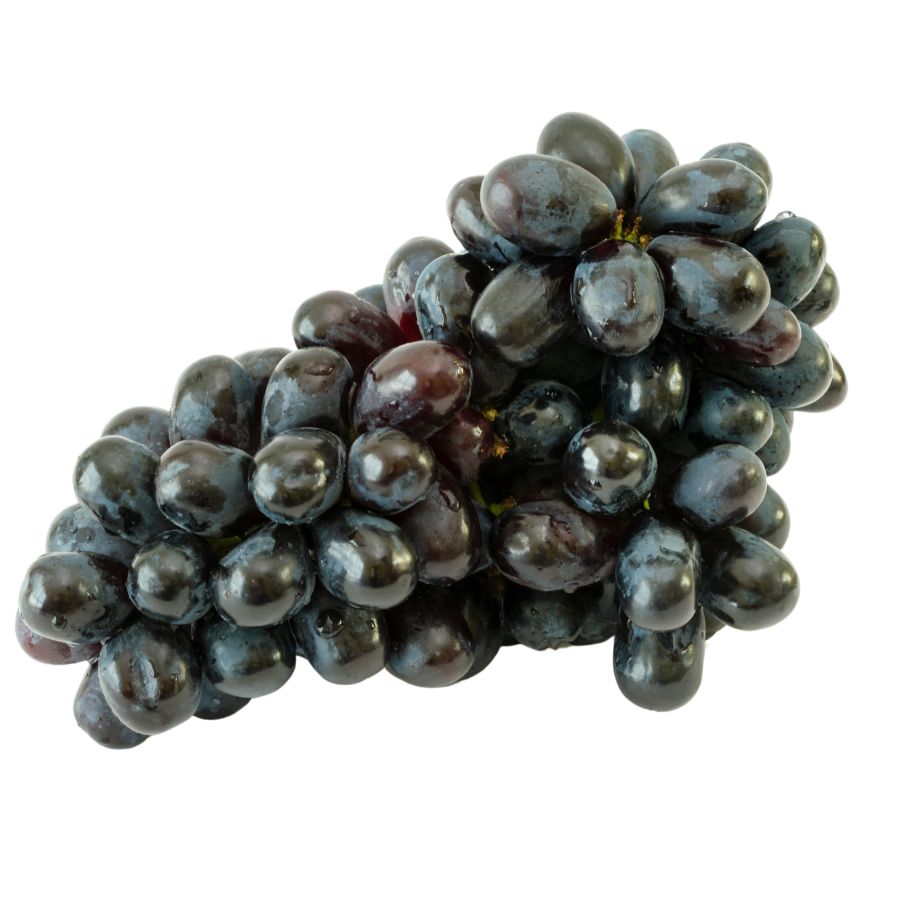
The wild grape produces fruit that hangs in loose clusters, smaller than cultivated grapes but packed with intense flavor. The vines climb enthusiastically up trees and across shrubs using specialized tendrils to anchor themselves.
To identify wild grapes correctly, look for the distinctive heart-shaped leaves with toothed edges and tendrils growing opposite from leaf stems. The bark peels in strips on older vines.
Caution is important since toxic lookalikes exist. Canada moonseed resembles wild grape but has solid seeds instead of the grape’s typical notched seeds. Always check the seeds before consuming.
Both the young leaves and ripe fruits are edible. The leaves can be stuffed and cooked similar to dolmas, while the tart fruits make excellent jellies and juices. The leaves contain beneficial antioxidants and have been used traditionally to wrap foods for cooking.
Beech Nut (Fagus grandifolia)
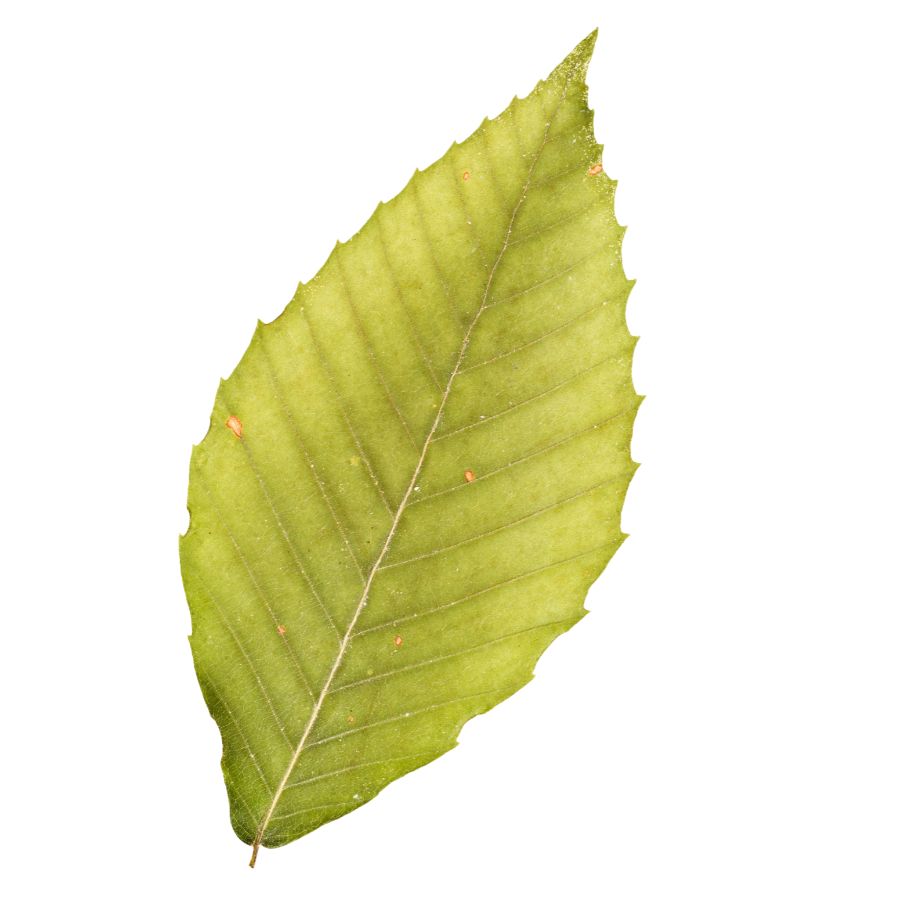
The American beech tree produces small triangular nuts inside bristly husks that split open when ripe in fall. Beech nuts have a rich, sweet flavor somewhat similar to mild chestnuts when roasted. The trees themselves are majestic, with smooth gray bark often compared to elephant skin.
The nuts require some work to harvest and process. Each husk contains two to three small nuts that must be removed from their shells. Roasting improves both flavor and digestibility.
Wildlife from bears to squirrels compete for these nutritious nuts. They contain high levels of protein and healthy fats that sustained many Native American communities through winter months.
Beech trees are easy to identify by their distinctive bark and long, pointed buds in winter. The nuts are safe to eat with no toxic lookalikes, though they can cause digestive upset if eaten raw in large quantities.
Redbud (Cercis canadensis)
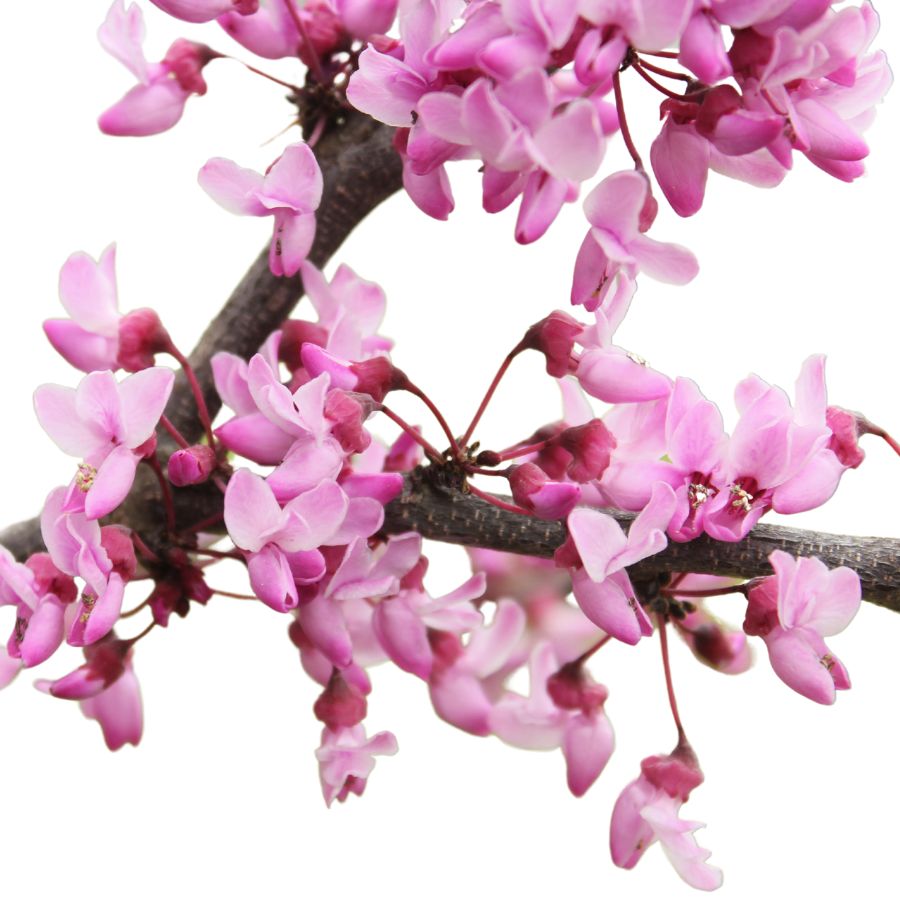
The small, pinkish-purple flowers of the eastern redbud grow directly from the branches and even the trunk. These blooms are edible raw and have a slightly tangy, pea-like flavor that works well in salads or as a garnish.
You can also eat the young seed pods when they’re still flat and tender. They taste somewhat like snow peas and can be lightly steamed, stir-fried, or pickled.
Avoid older seed pods, which become tough and fibrous. Also be aware that while the flowers and young pods are safe to eat, the mature seeds and bark are not consumed.
Some people sprinkle the blossoms into baked goods for a splash of color and a mild floral note. Others like to candy the flowers, though they lose some of their fresh bite in the process.
Daylily (Hemerocallis fulva)
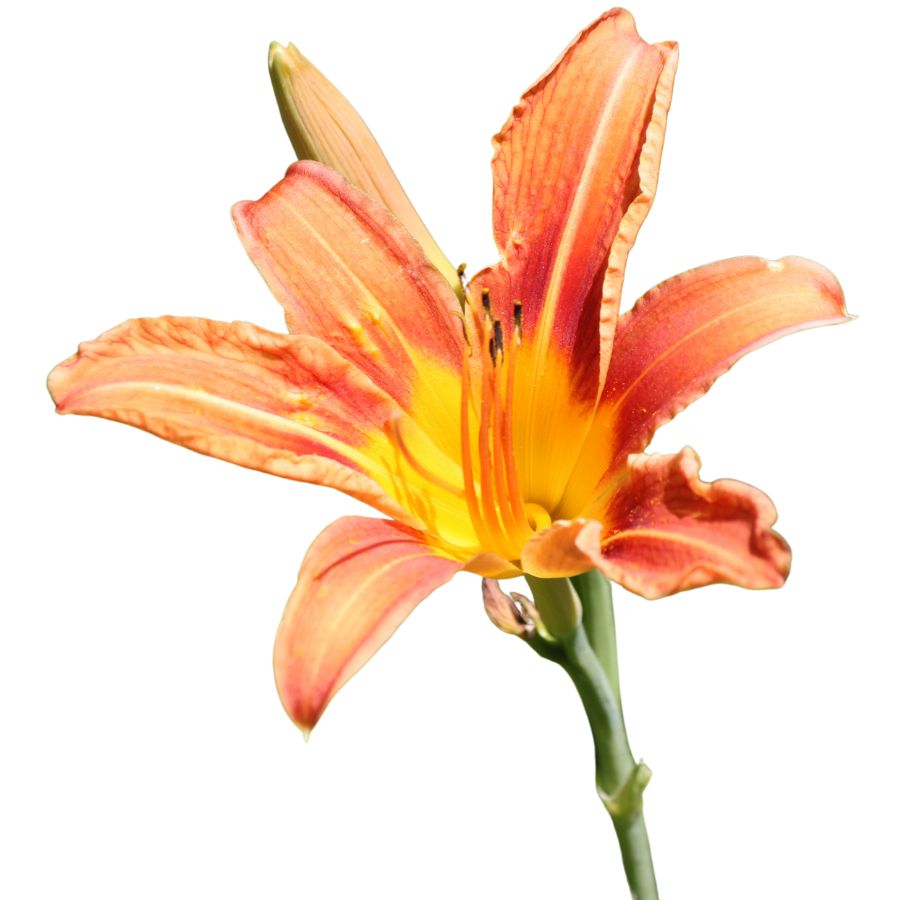
Bright orange flowers known as daylily, tiger lily, or ditch lily can sometimes be mistaken for other plants that are not safe to eat. True daylilies have long, blade-like leaves that grow in clumps at the base and a hollow flower stem, while their toxic lookalikes often have solid stems or different leaf patterns.
When it comes to flavor, daylily buds have a crisp texture and a mild taste that some people compare to green beans or asparagus. The flowers are tender and slightly sweet, which makes them popular for tossing into salads or lightly stir-frying.
Most people use the unopened flower buds in cooking, but the young shoots and tuber-like roots are also gathered for food. Always make sure you are harvesting from clean areas, because roadside plants can carry pollutants that are not safe to eat.
A few important cautions come with daylilies, since some people experience digestive upset after eating large amounts. Start by tasting a small quantity first to see how your body reacts before eating more.
Autumn Olive (Elaeagnus umbellata)
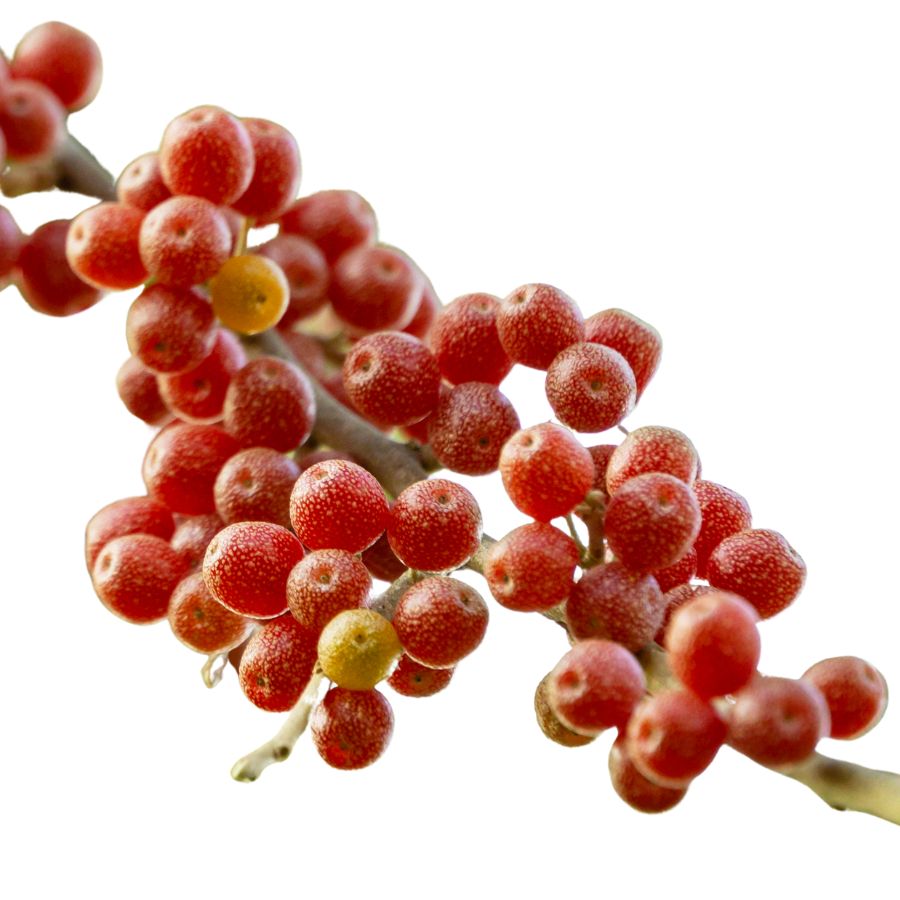
With its silver-dusted leaves and small, speckled red fruits, autumn olive, also called silverberry or Japanese silverberry, has made its way into many thickets and field edges. The fruit is edible, tart, and slick-skinned, with a burst of sourness that mellows in cooked preparations.
People often turn autumn olive into jelly, sauces, or fermented beverages to tame the intense flavor. You can also dehydrate the berries into a powder for use in baked goods.
Some confuse it with Russian olive, which grows similar leaves but bears dry, yellow fruit instead. Stick to harvesting just the berries, as the rest of the plant doesn’t have any culinary use.
What makes autumn olive particularly interesting is its nitrogen-fixing ability, which helps it thrive where other plants struggle, but that same trait is also why it spreads so aggressively. Still, the fruit is safe and edible, and one of the few wild berries with such a high lycopene content.
Wood Sorrel (Oxalis spp.)
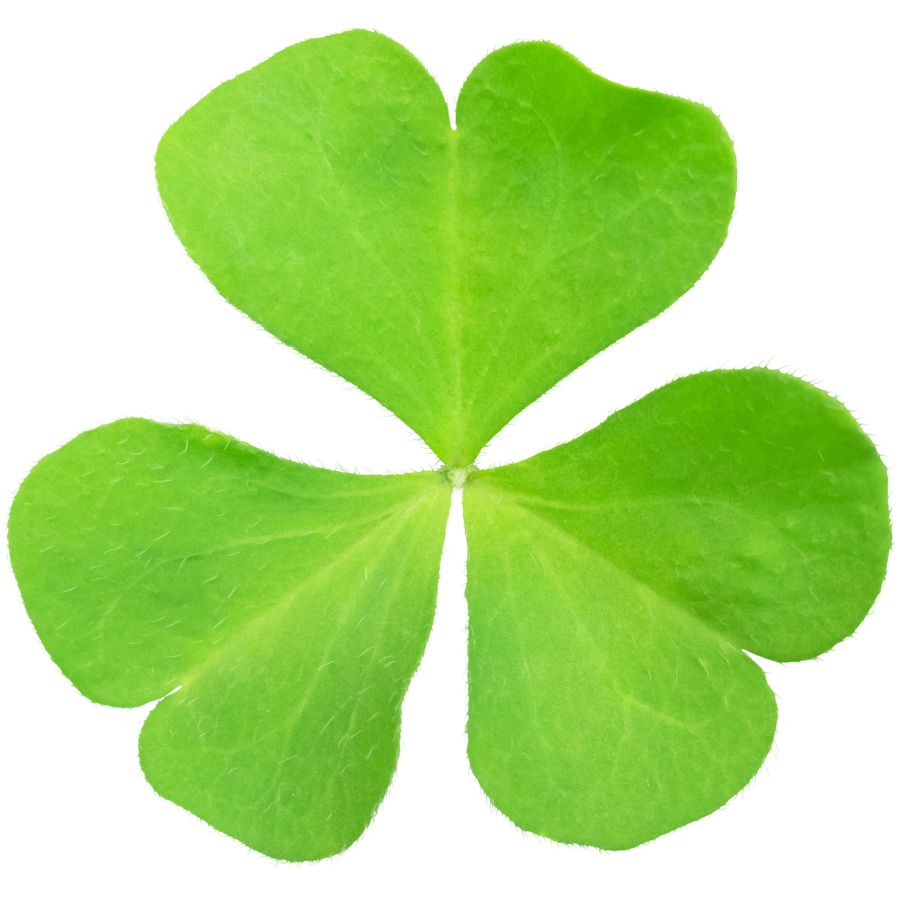
Wood sorrel is easy to spot with its clover-like leaves, delicate flowers, and sour flavor. It often goes by names like sourgrass and shamrock, although it is not the same as the traditional Irish shamrock.
Wood sorrel can be mistaken for true clovers, which do not have the same sour taste. Always check the leaf shape and flavor before eating, because wood sorrel leaves are distinctly heart-shaped and more delicate.
The leaves, flowers, and seed pods of wood sorrel are all edible and have a sharp, lemony taste that makes them a refreshing trail snack. You can also toss them into salads or use them as a garnish to brighten up a dish with their tartness.
While wood sorrel is generally safe in small amounts, it does contain oxalic acid, so it is best not to eat large quantities. Some people also like to brew the leaves into a light, tangy tea, adding another way to enjoy this common and flavorful wild plant.
Ground Ivy (Glechoma hederacea)
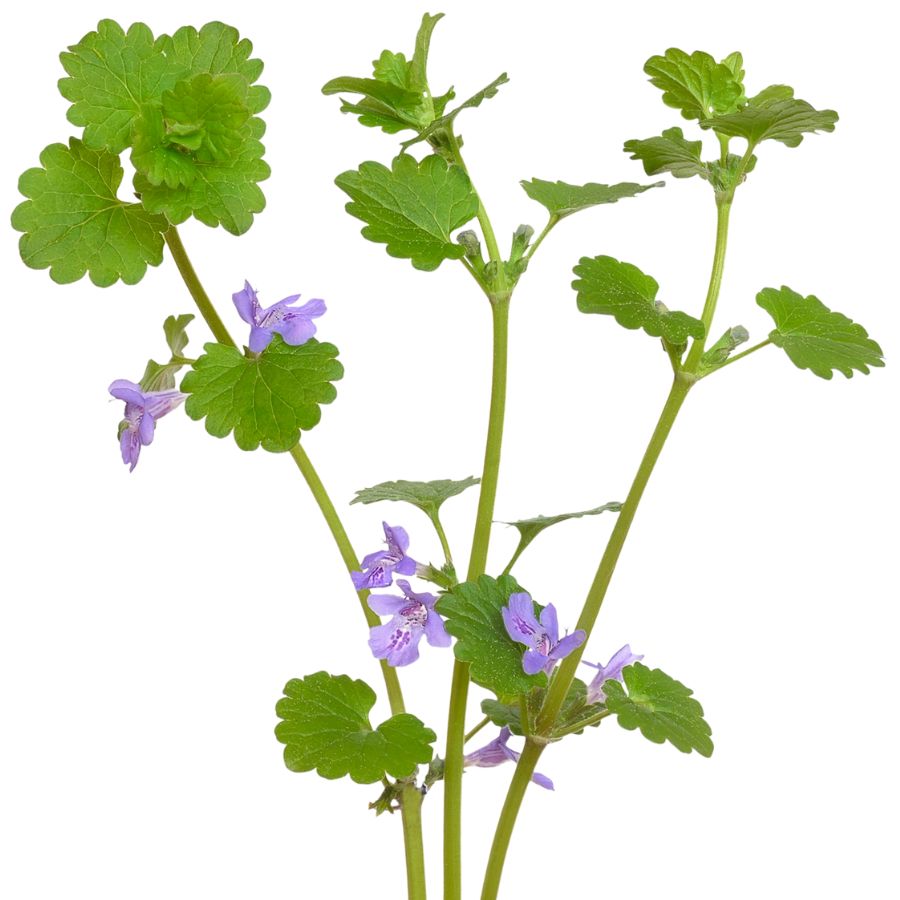
You’re looking at ground ivy if you find a vining plant with scalloped leaves and clusters of tiny bluish-purple flowers hugging the ground. It’s also called creeping charlie or tunhoof, and it grows in dense mats that spread rapidly.
The leaves and stems are edible and have a sharp, minty-bitter flavor that intensifies when dried. Some people use them sparingly in herb butters or infuse them into vinegar for a bold, green tang.
Watch out for lookalikes like henbit, which has more rounded upper leaves and lacks the strong herbal smell. Crushed ground ivy gives off a camphor-like scent that makes it easier to distinguish once you know what to expect.
Avoid foraging near roadsides or polluted soils since this plant easily absorbs heavy metals. Stick to clean patches, and only use the above-ground parts—roots aren’t eaten, and older leaves can become too tough.
Yarrow (Achillea millefolium)
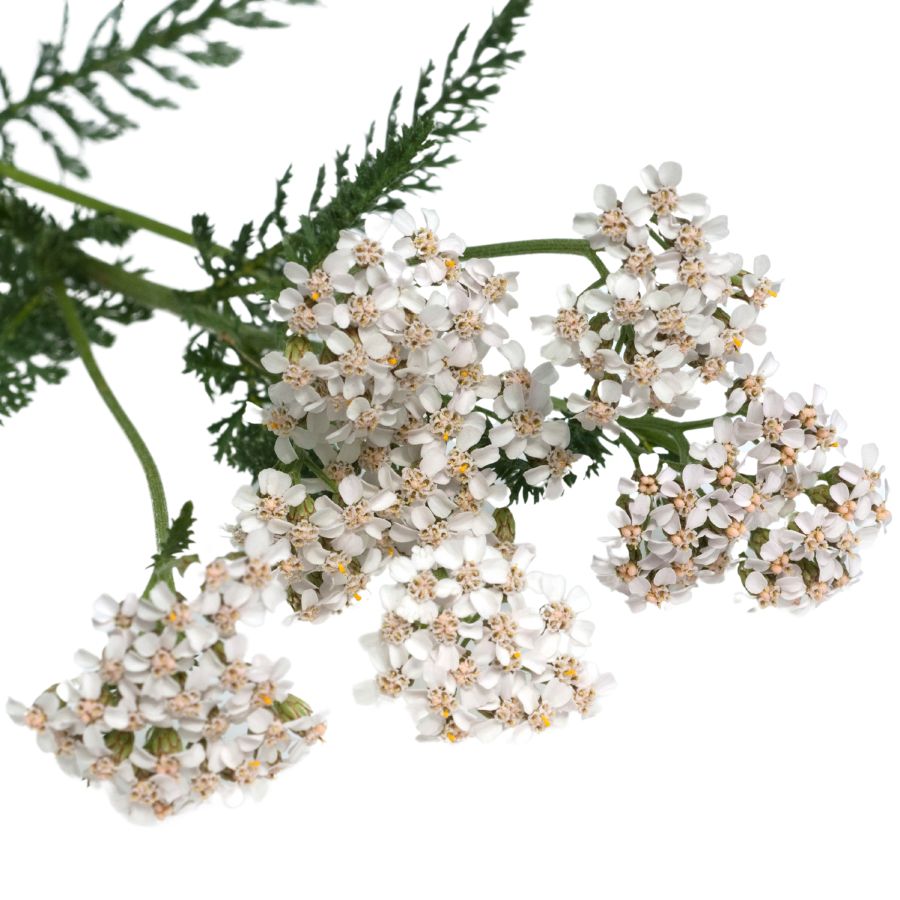
The first thing you’ll notice about yarrow is its flat-topped clusters of tiny white flowers and its finely divided, almost feathery leaves. You can eat the leaves and flowers, though the taste is bitter and earthy, with a slightly peppery kick.
It’s often used in small amounts to flavor soups, sauces, or infused into vinegar for a wild herbal edge. Drying the leaves for later use is common, especially if you want to tame some of the bitterness.
Be cautious not to confuse it with poison hemlock, which has smooth purple-spotted stems and lacks the fern-like leaves of yarrow. If you crush a yarrow leaf, the strong herbal scent is another helpful clue.
Don’t eat the stems or roots—they’re tough and unpleasant. Stick to the upper leaves and blossoms if you’re planning to add it to food.
Wild Mint (Mentha arvensis)

You’re probably familiar with the strong scent of wild mint, which comes from the essential oils concentrated in its leaves. It has square stems, lance-shaped leaves with slightly toothed edges, and pale lilac flower clusters.
The fresh leaves can be eaten raw, cooked into soups, or muddled into drinks for a crisp flavor. Expect a bright, menthol-like kick with a hint of sweetness.
False mint species like purple deadnettle grow in similar spots but lack the menthol smell and have fuzzy leaves. If the plant doesn’t smell like mint, it probably isn’t.
Stick to the leaves and younger stems for eating because the woody stalks aren’t palatable. Wild mint also holds up well when dried and stored for tea or seasoning.
Lamb’s Quarters (Chenopodium album)
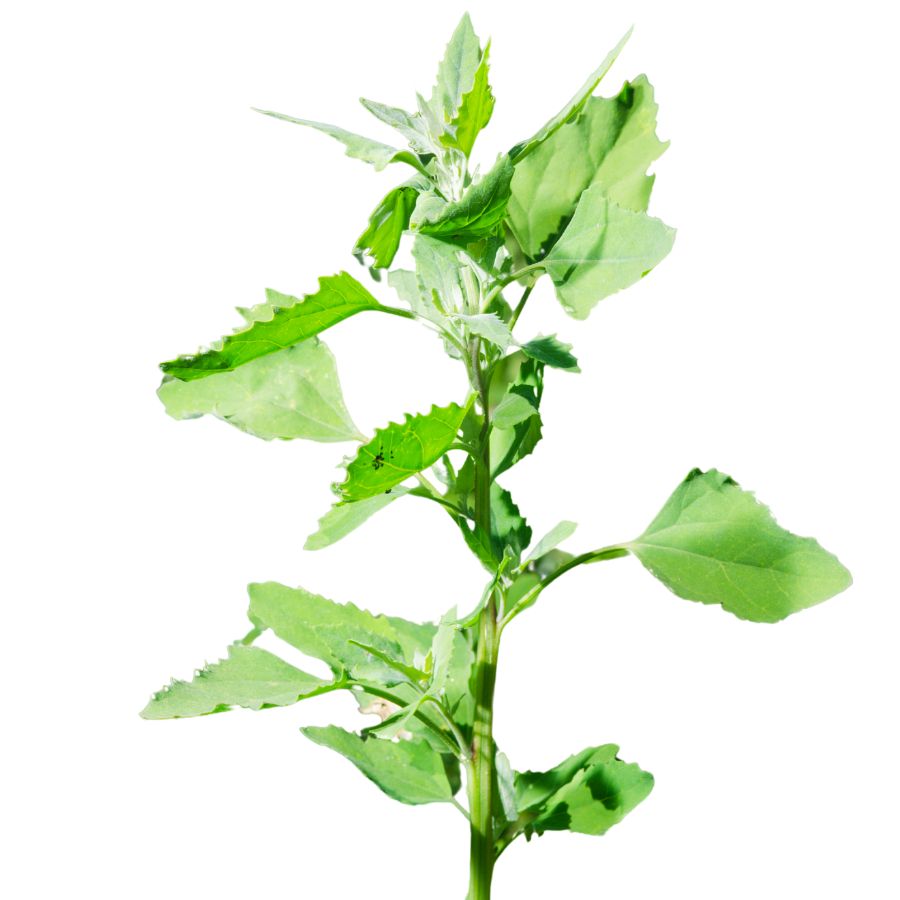
Lamb’s quarters, also called wild spinach and pigweed, has soft green leaves that often look dusted with a white, powdery coating. The leaves are shaped a little like goose feet, with slightly jagged edges and a smooth underside that feels almost velvety when you touch it.
A few plants can be confused with lamb’s quarters, like some types of nightshade, but true lamb’s quarters never have berries and its leaves are usually coated in that distinctive white bloom. Always check that the stems are grooved and not round and smooth like the poisonous lookalikes.
When you taste lamb’s quarters, you will notice it has a mild, slightly nutty flavor that gets richer when cooked. The young leaves, tender stems, and even the seeds are all edible, but you should avoid eating the older stems because they become tough and stringy.
People often sauté lamb’s quarters like spinach, blend it into smoothies, or dry the leaves for later use in soups and stews. It is also rich in oxalates, so you will want to cook it before eating large amounts to avoid any problems.
Black Raspberry (Rubus occidentalis)

Black raspberries grow on arching canes covered with small, hooked thorns. The berries start out red before ripening to a deep purplish-black color, and they have a hollow core when picked.
The fruit tastes sweet with a mild tartness, and the texture is juicy but slightly firmer than a red raspberry. People often use black raspberries for jams, pies, syrups, and even simple fruit leathers made at home.
Blackberry and wineberry are common lookalikes, which can confuse foragers at first glance. Black raspberry canes usually have a whitish coating and smaller thorns compared to the shinier, stouter canes of a blackberry.
You can eat the ripe fruit raw or cooked, but the leaves are sometimes brewed into teas after proper drying. It is best to avoid the green, unripe berries, as they are tough and lack the flavor that makes black raspberry such a favorite.
Chickweed (Stellaria media)
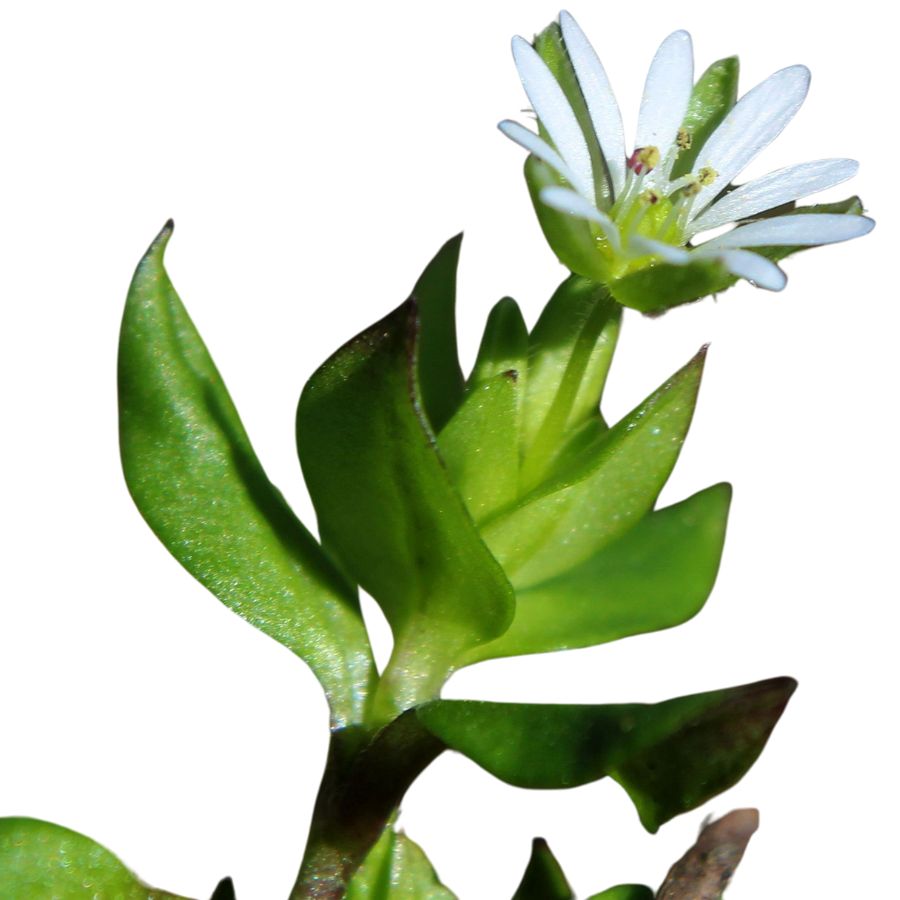
Chickweed, sometimes called satin flower or starweed, is a small, low-growing plant with delicate white star-shaped flowers and bright green leaves. The leaves are oval, pointed at the tip, and often grow in pairs along a slender, somewhat weak-looking stem.
When gathering chickweed, watch out for lookalikes like scarlet pimpernel, which has similar leaves but orange flowers instead of white. A key detail to check is the fine line of hairs that runs along one side of chickweed’s stem, a feature the dangerous lookalikes do not have.
The young leaves, tender stems, and flowers of chickweed are all edible, offering a mild, slightly grassy flavor with a crisp texture. You can toss it fresh into salads, blend it into pestos, or lightly wilt it into soups and stir-fries for a fresh green boost.
Aside from being a food plant, chickweed has been used traditionally in poultices and salves to help soothe skin irritations. Always make sure the plant is positively identified before eating, since mistaking it for a toxic lookalike could cause serious issues.
American Persimmon (Diospyros virginiana)
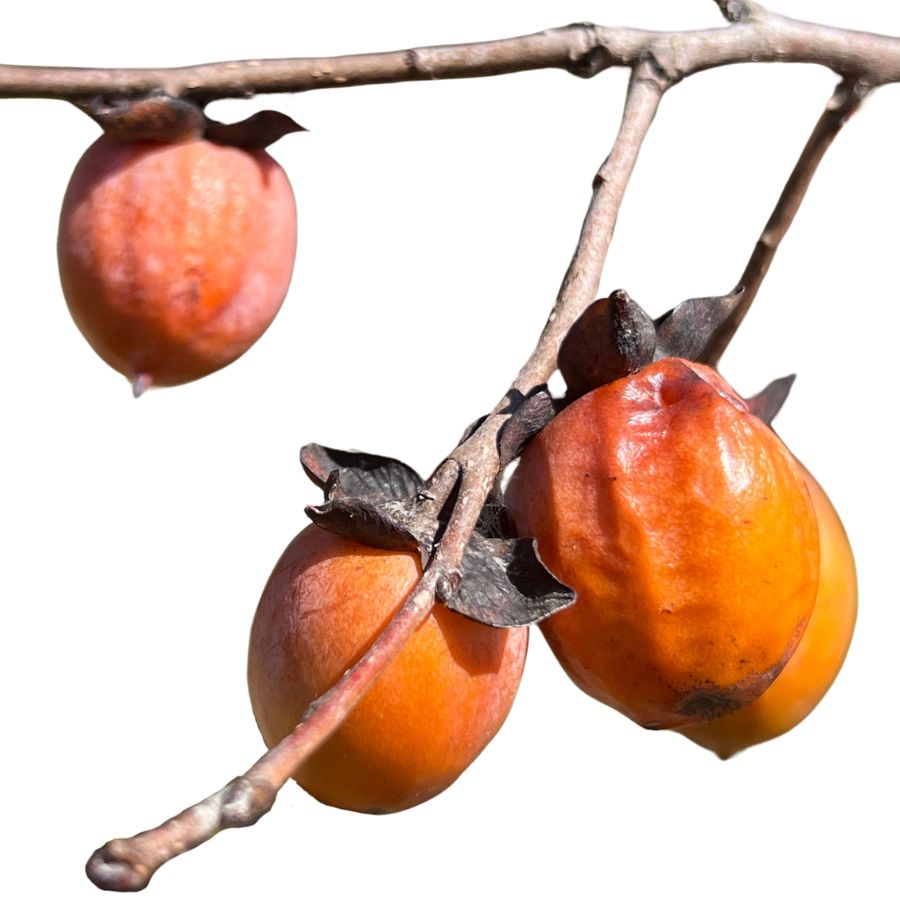
Persimmon, sometimes called American persimmon or common persimmon, grows as a small tree with rough, blocky bark and oval-shaped leaves. The fruit looks like a small, flattened tomato and turns a deep orange or reddish color when ripe.
If you bite into an unripe persimmon, you will quickly notice an extremely astringent, mouth-drying effect. A ripe persimmon, on the other hand, tastes sweet, rich, and custard-like, with a soft and jelly-like texture inside.
You can eat persimmons fresh once they are fully ripe, or you can cook them down into puddings, jams, and baked goods. Some people also mash and freeze the pulp to use later for pies, breads, and sauces.
Wild persimmons can sometimes be confused with black nightshade berries, but nightshade fruits are much smaller, grow in clusters, and stay dark purple or black. Only the ripe fruit of the persimmon tree should be eaten; the seeds and the unripe fruit are not edible.
Sheep Sorrel (Rumex acetosella)
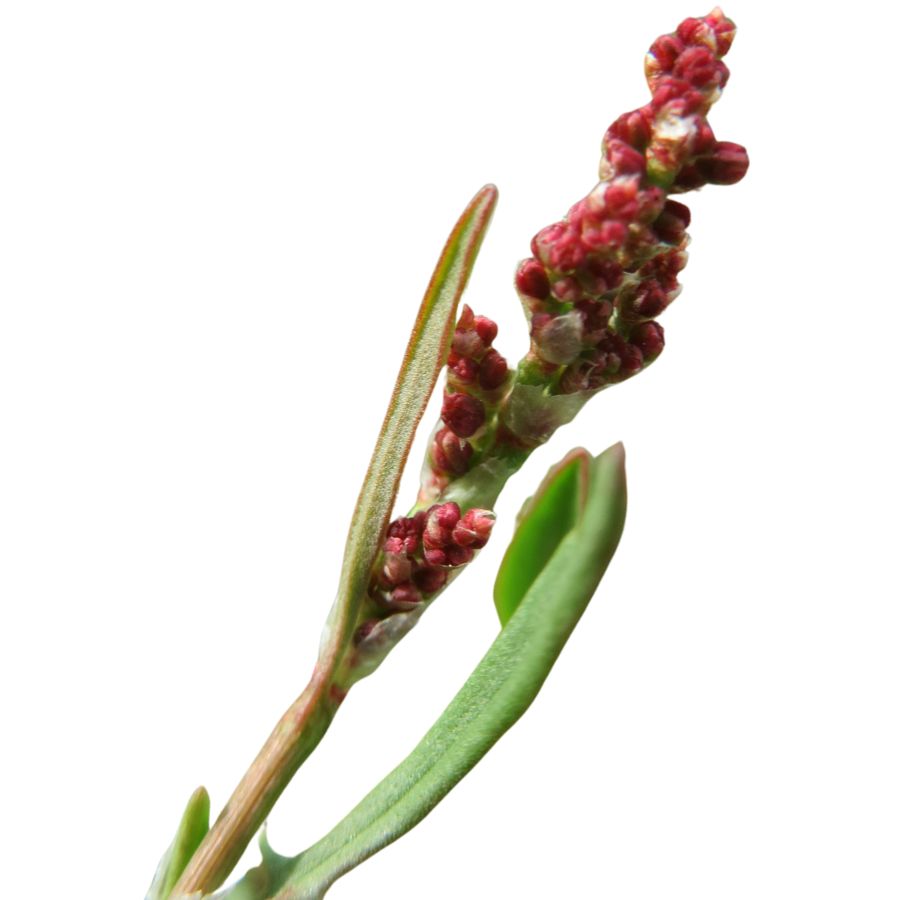
Sheep sorrel has narrow, arrow-shaped leaves with two small lobes at the base and a sharp, lemony flavor that hits immediately when you chew it. You can eat the leaves raw, toss them into soups, or blend them into sauces where their tang brightens up heavy dishes.
The leaves are soft and tender, and the stems are edible too, though they’re a bit more fibrous. Avoid confusing it with related docks like curly dock—those leaves are broader, tougher, and don’t have the same tart bite.
People mostly use sheep sorrel fresh, but it also dries well for tea or powdered seasoning. Its high oxalic acid content means you shouldn’t eat large amounts regularly, especially if you have kidney issues.
Red-tinted veins often run through the green leaves, especially in poor or acidic soils. The roots and flowers aren’t typically eaten, so stick with the leaves and young stems.
Japanese Knotweed (Reynoutria japonica)
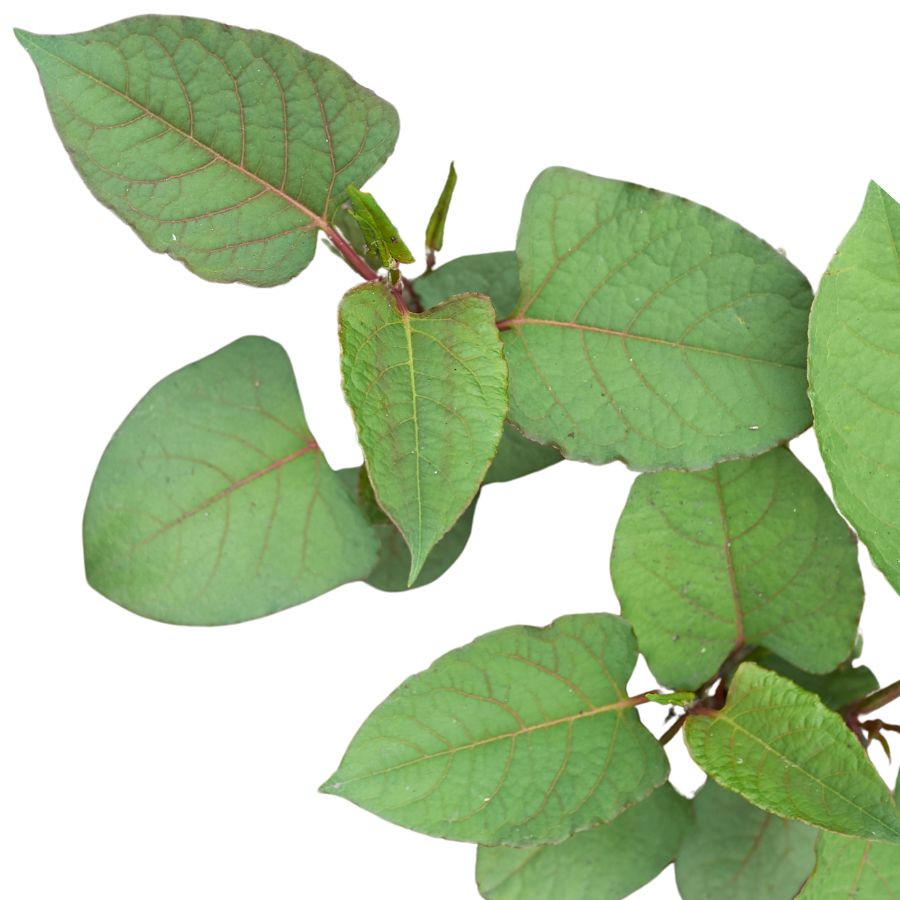
With its reddish-green stems and large spade-shaped leaves, Japanese knotweed—also called monkey weed—can be a surprisingly tasty wild ingredient. It has a strong, lemony flavor that mellows with cooking and pairs well with fruit.
People sometimes confuse it with giant ragweed or pokeweed, but knotweed stems are smooth, hollow, and ridged at the nodes, unlike the solid or grooved stems of those toxic lookalikes. Always focus on the young, flexible shoots, discarding any that feel stiff or woody.
Simmered into jams, blended into dressings, or used in baked goods, this plant transforms into something tart and refreshing. Peeled stalks can also be quick-pickled or sautéed.
You don’t want to eat the leaves or roots, and it’s smart to avoid areas sprayed with herbicides. Despite being considered a nuisance plant, it’s highly versatile in the kitchen.
Serviceberry (Amelanchier spp.)
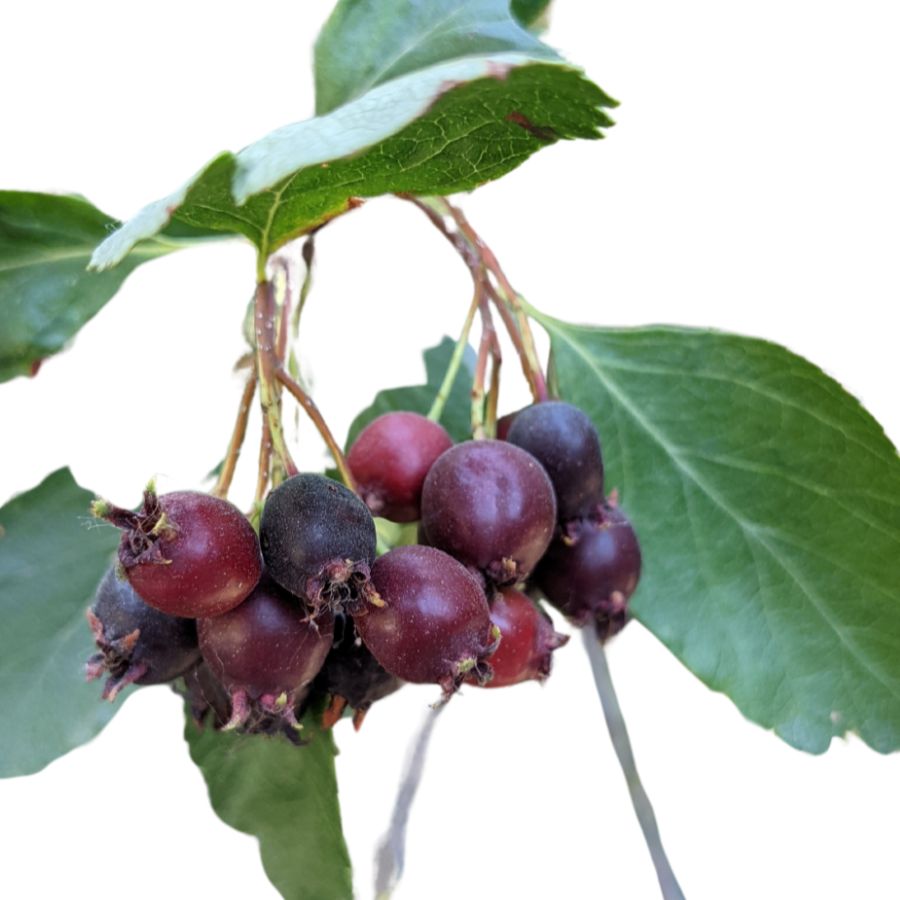
Serviceberry trees display clusters of stunning white flowers in early spring before their leaves appear. The small berries start green, transition to red, and finally ripen to a deep purple-blue color in early summer. They have a sweet flavor similar to blueberries with hints of almond.
The fruits are completely edible raw and make excellent additions to pies, jams, and muffins. Many birds also enjoy these berries, so gathering them requires quick action when they ripen.
When identifying serviceberries, look for their oval leaves with finely toothed edges and smooth gray bark. No dangerous lookalikes exist, though juneberries are closely related and equally edible.
Native Americans dried serviceberries to preserve them through winter months. The wood from these trees is also valuable for making tool handles due to its strength and durability.
Field Mustard (Brassica rapa)
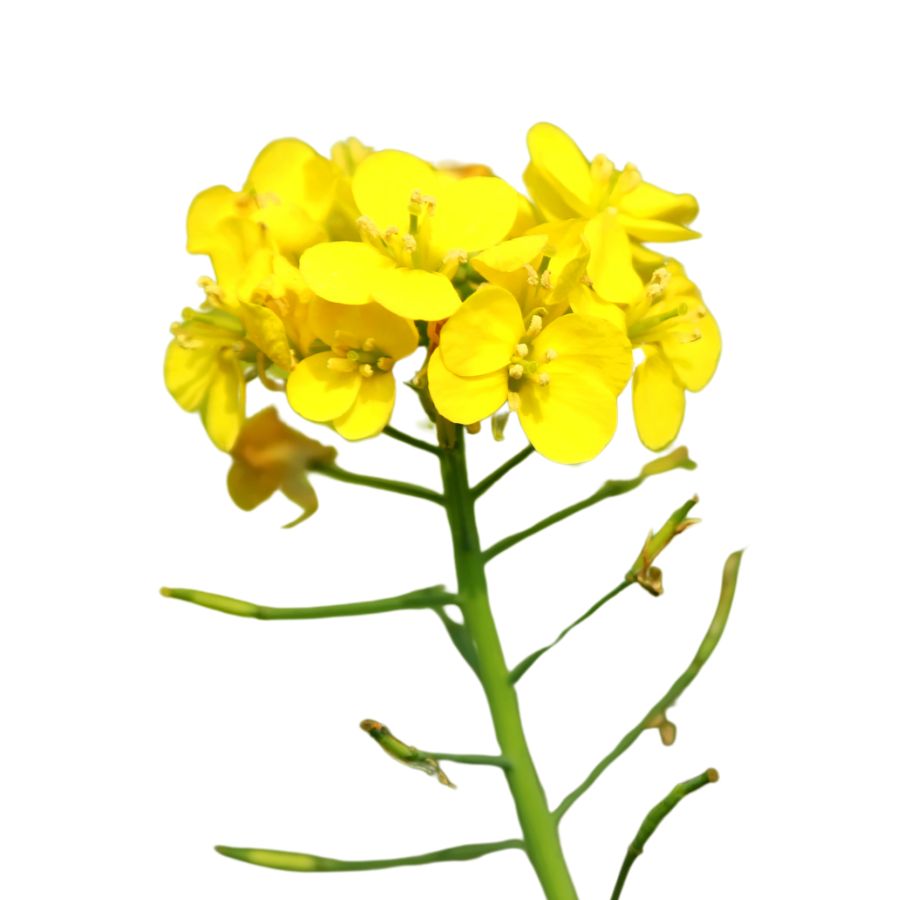
Field mustard grows in open areas and along roadsides, showing off bright yellow flowers atop stems that reach 1-3 feet tall. The plant belongs to the same family as broccoli and cabbage, explaining its slightly peppery taste that adds kick to wild salads.
Young leaves are the prime edible part, best harvested before flowering when they’re tender and less bitter. The yellow flowers and seed pods are also edible and make colorful additions to salads.
Be careful not to confuse field mustard with wild radish, which has similar flowers but hairy leaves. Both are edible but field mustard typically tastes better.
The entire plant contains mustard oils that give it a spicy flavor profile. These compounds have traditionally been used to treat respiratory conditions and stimulate circulation in folk medicine practices around the world.
Toxic Plants That Look Like Edible Plants
There are plenty of wild edibles to choose from, but some toxic native plants closely resemble them. Mistaking the wrong one can lead to severe illness or even death, so it’s important to know exactly what you’re picking.
Poison Hemlock (Conium maculatum)
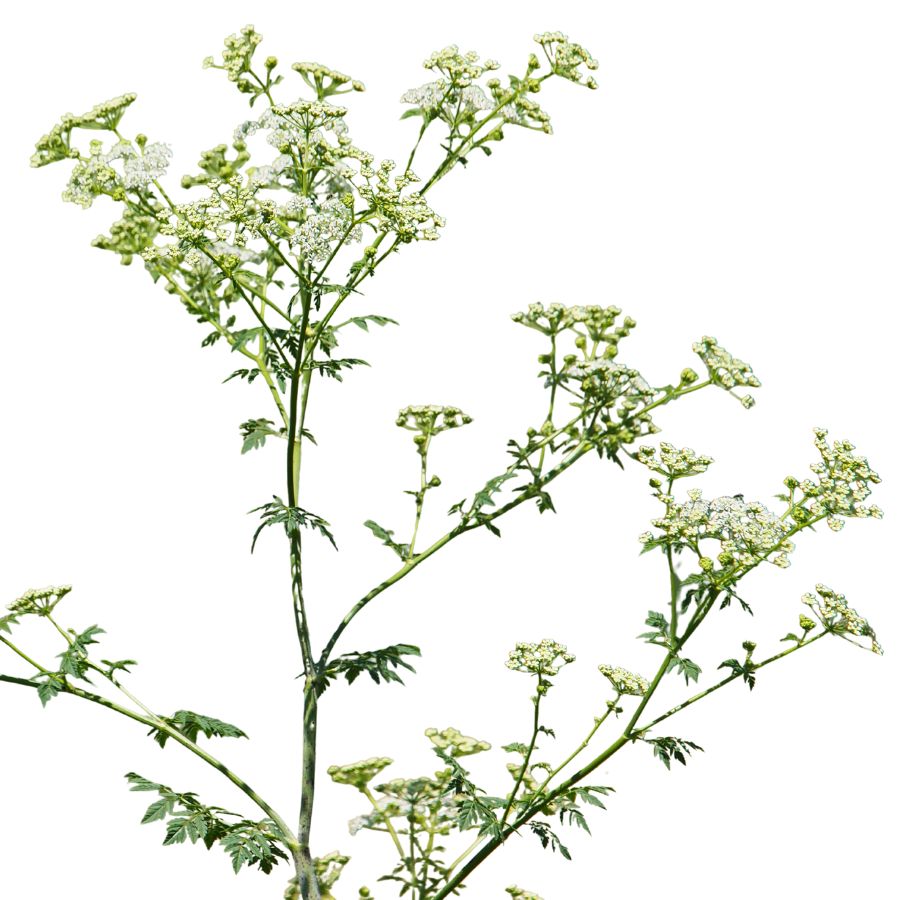
Often mistaken for: Wild carrot (Daucus carota)
Poison hemlock is a tall plant with lacy leaves and umbrella-like clusters of tiny white flowers. It has smooth, hollow stems with purple blotches and grows in sunny places like roadsides, meadows, and stream banks.
Unlike wild carrot, which has hairy stems and a dark central floret, poison hemlock has a musty odor and no flower center spot. It’s extremely toxic; just a small amount can be fatal, and even touching the sap can irritate the skin.
Water Hemlock (Cicuta spp.)
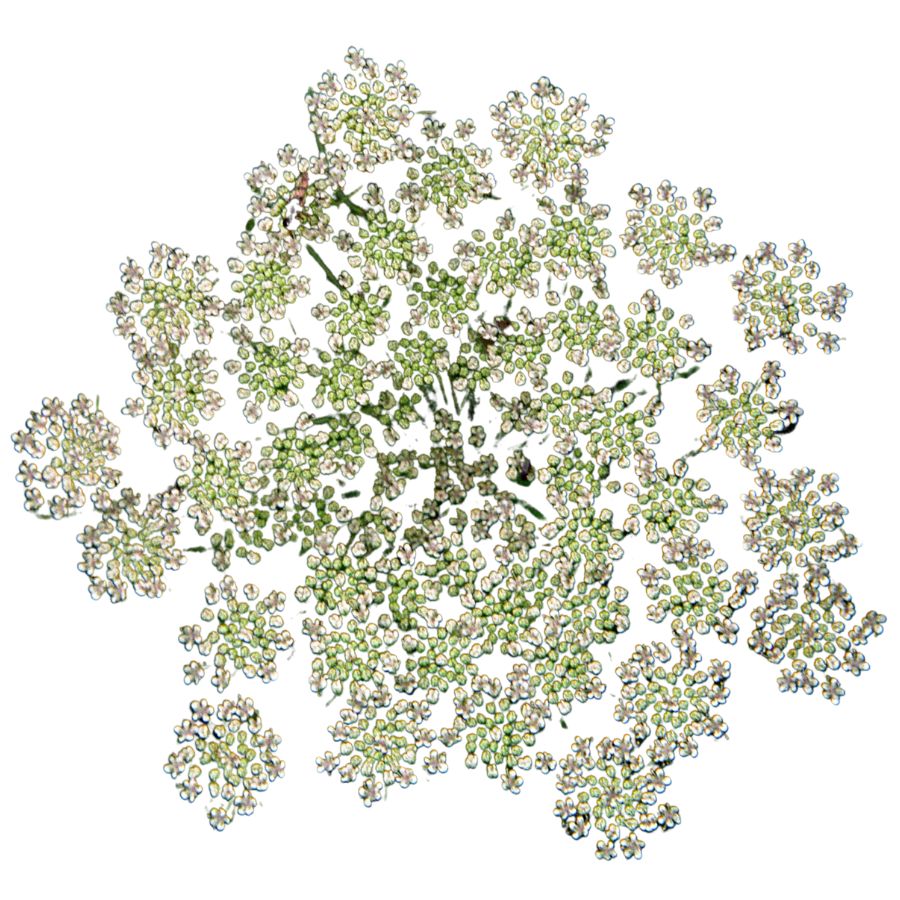
Often mistaken for: Wild parsnip (Pastinaca sativa) or wild celery (Apium spp.)
Water hemlock is a tall, branching plant with umbrella-shaped clusters of small white flowers. It grows in wet places like stream banks, marshes, and ditches, with stems that often show purple streaks or spots.
It can be confused with wild parsnip or wild celery, but its thick, hollow roots have internal chambers and release a yellow, foul-smelling sap when cut. Water hemlock is the most toxic plant in North America, and just a small amount can cause seizures, respiratory failure, and death.
False Hellebore (Veratrum viride)
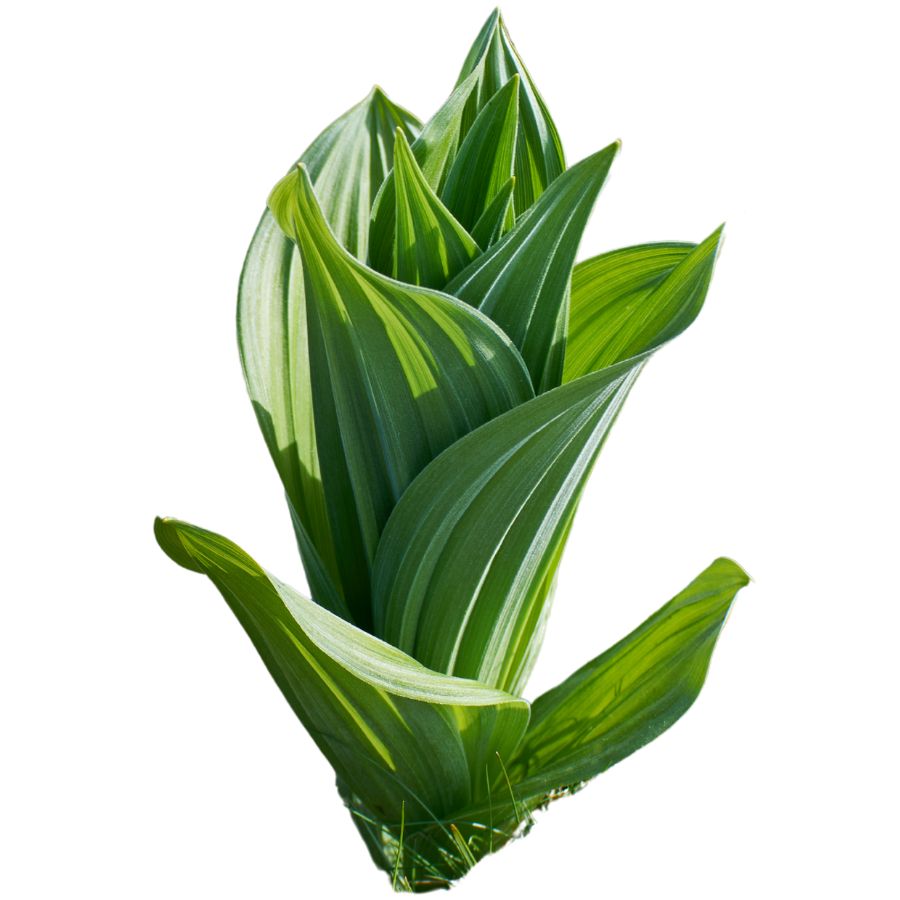
Often mistaken for: Ramps (Allium tricoccum)
False hellebore is a tall plant with broad, pleated green leaves that grow in a spiral from the base, often appearing early in spring. It grows in moist woods, meadows, and along streams.
It’s commonly mistaken for ramps, but ramps have a strong onion or garlic smell, while false hellebore is odorless and later grows a tall flower stalk. The plant is highly toxic, and eating any part can cause nausea, a slowed heart rate, and even death due to its alkaloids that affect the nervous and cardiovascular systems.
Death Camas (Zigadenus spp.)
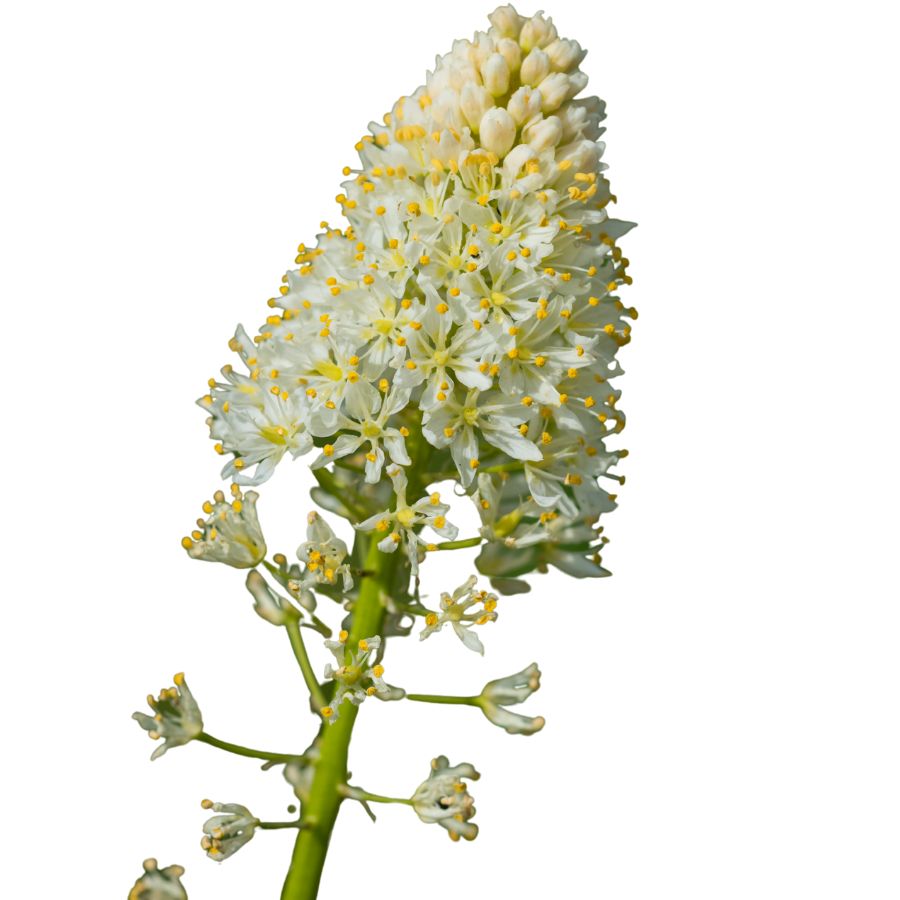
Often mistaken for: Wild onion or wild garlic (Allium spp.)
Death camas is a slender, grass-like plant that grows from underground bulbs and is found in open woods, meadows, and grassy hillsides. It has small, cream-colored flowers in loose clusters atop a tall stalk.
It’s often confused with wild onion or wild garlic due to their similar narrow leaves and habitats, but only Allium plants have a strong onion or garlic scent, while death camas has none. The plant is extremely poisonous, especially the bulbs, and even a small amount can cause nausea, vomiting, a slowed heartbeat, and potentially fatal respiratory failure.
Buckthorn Berries (Rhamnus spp.)
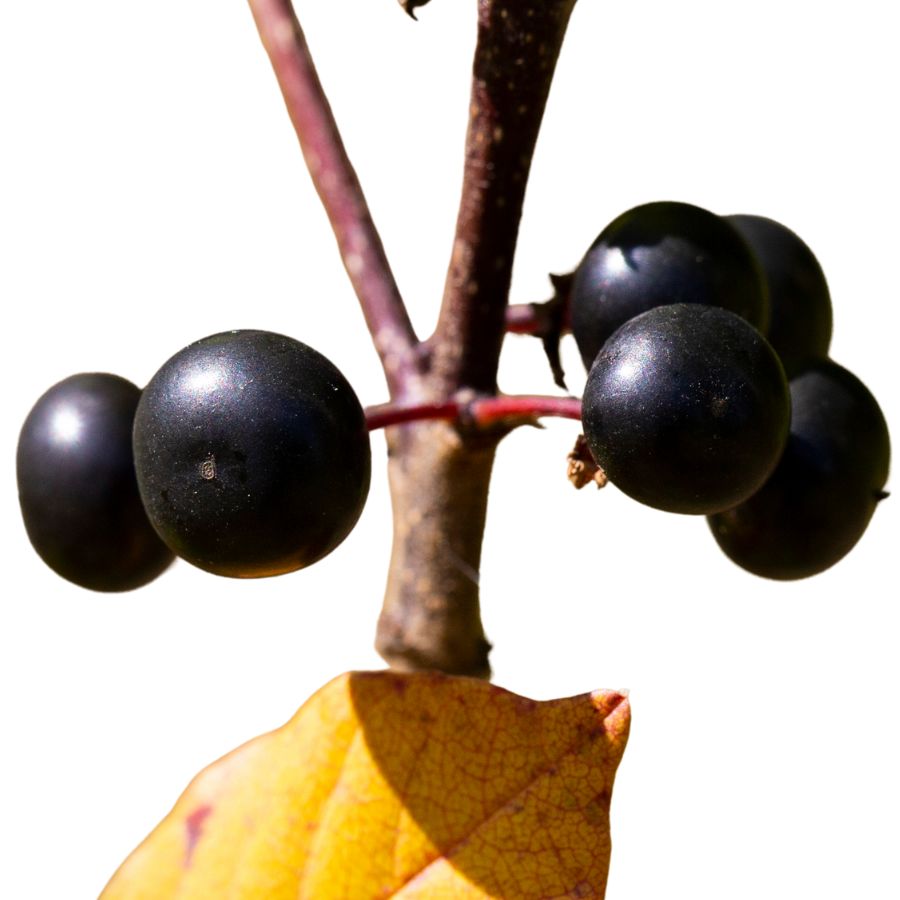
Often mistaken for: Elderberries (Sambucus spp.)
Buckthorn is a shrub or small tree often found along woodland edges, roadsides, and disturbed areas. It produces small, round berries that ripen to dark purple or black and usually grow in loose clusters.
These berries are sometimes mistaken for elderberries and other wild fruits, which also grow in dark clusters, but elderberries form flat-topped clusters on reddish stems while buckthorn berries are more scattered. Buckthorn berries are unsafe to eat as they contain compounds that can cause cramping, vomiting, and diarrhea, and large amounts may lead to dehydration and serious digestive problems.
Mayapple (Podophyllum peltatum)
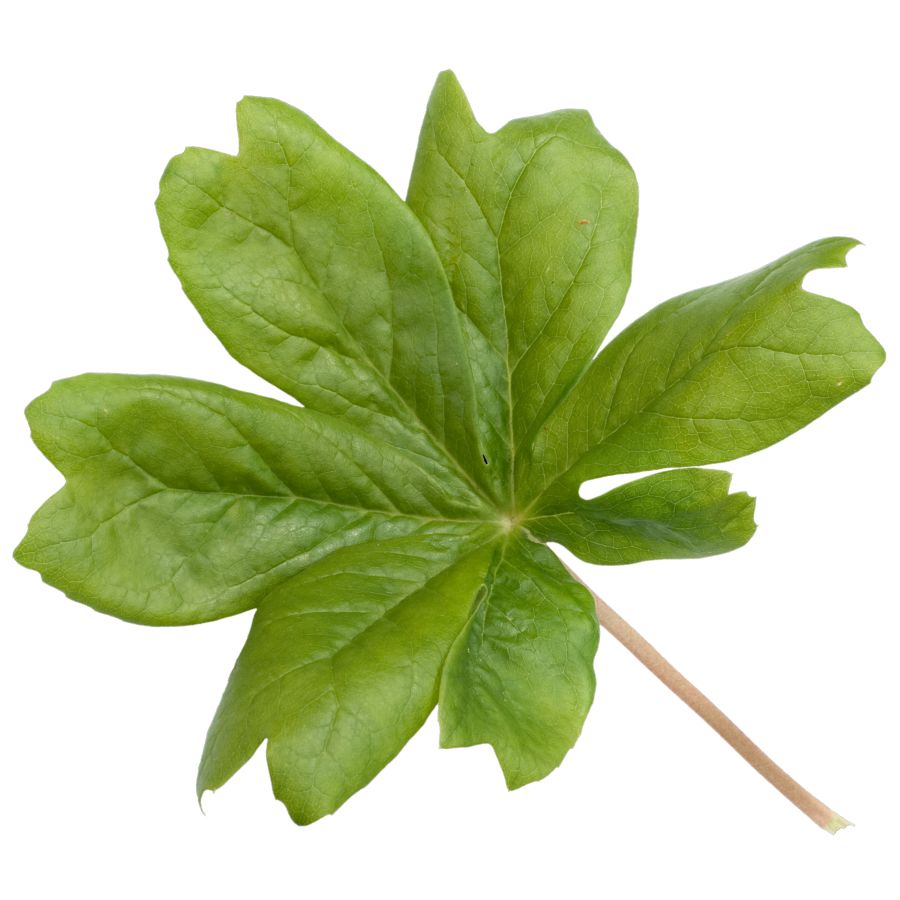
Often mistaken for: Wild grapes (Vitis spp.)
Mayapple is a low-growing plant found in shady forests and woodland clearings. It has large, umbrella-like leaves and produces a single pale fruit hidden beneath the foliage.
The unripe fruit resembles a small green grape, causing confusion with wild grapes, which grow in woody clusters on vines. All parts of the mayapple are toxic except the fully ripe, yellow fruit, which is only safe in small amounts. Eating unripe fruit or other parts can lead to nausea, vomiting, and severe dehydration.
Virginia Creeper (Parthenocissus quinquefolia)
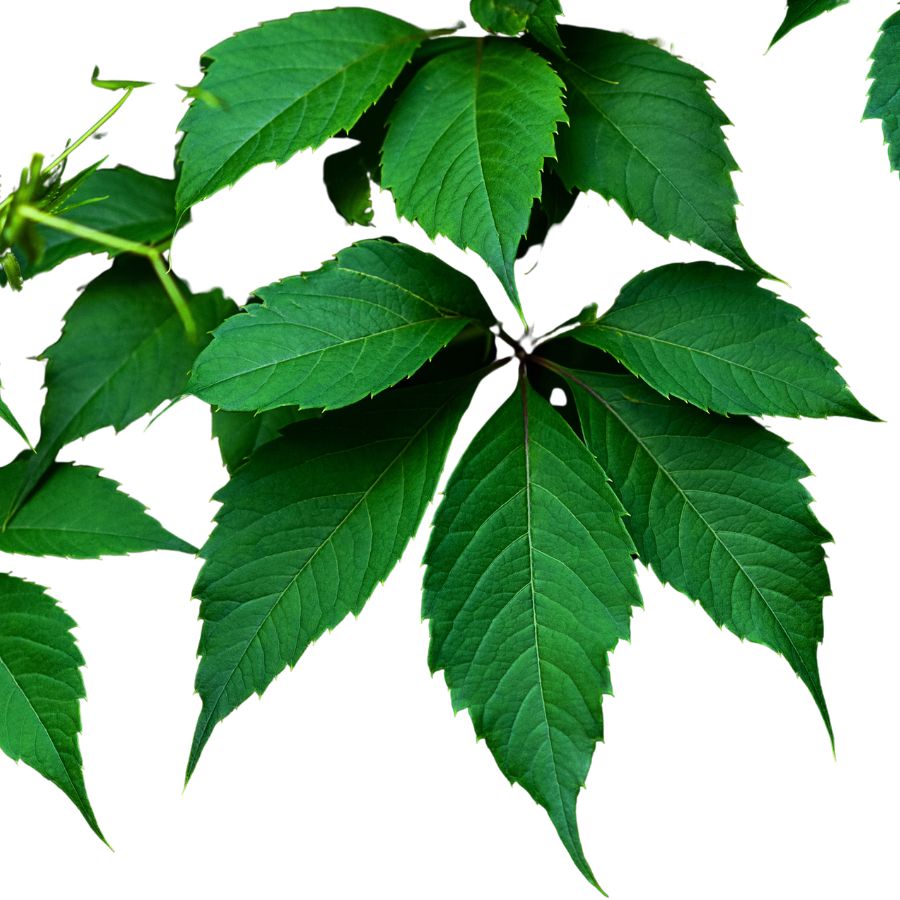
Often mistaken for: Wild grapes (Vitis spp.)
Virginia creeper is a fast-growing vine found on fences, trees, and forest edges. It has five leaflets per stem and produces small, bluish-purple berries from late summer to fall.
It’s often confused with wild grapes since both are climbing vines with similar berries, but grapevines have large, lobed single leaves and tighter fruit clusters. Virginia creeper’s berries are toxic to humans and contain oxalate crystals that can cause nausea, vomiting, and throat irritation.
Castor Bean (Ricinus communis)
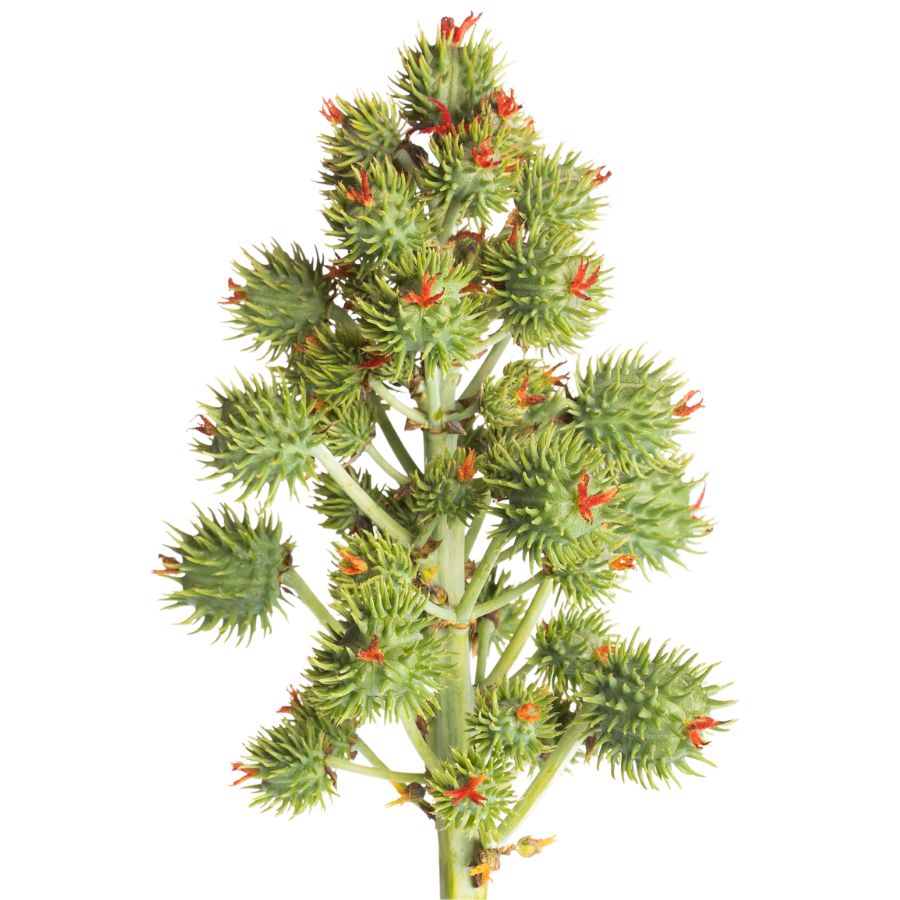
Often mistaken for: Wild rhubarb (Rumex spp. or Rheum spp.)
Castor bean is a bold plant with large, lobed leaves and tall red or green stalks, often found in gardens, along roadsides, and in disturbed areas in warmer regions in the US. Its red-tinged stems and overall size can resemble wild rhubarb to the untrained eye.
Unlike rhubarb, castor bean plants produce spiny seed pods containing glossy, mottled seeds that are extremely toxic. These seeds contain ricin, a deadly compound even in small amounts. While all parts of the plant are toxic, the seeds are especially dangerous and should never be handled or ingested.
A Quick Reminder
Before we get into the specifics about where and how to find these mushrooms, we want to be clear that before ingesting any wild mushroom, it should be identified with 100% certainty as edible by someone qualified and experienced in mushroom identification, such as a professional mycologist or an expert forager. Misidentification of mushrooms can lead to serious illness or death.
All mushrooms have the potential to cause severe adverse reactions in certain individuals, even death. If you are consuming mushrooms, it is crucial to cook them thoroughly and properly and only eat a small portion to test for personal tolerance. Some people may have allergies or sensitivities to specific mushrooms, even if they are considered safe for others.
The information provided in this article is for general informational and educational purposes only. Foraging for wild mushrooms involves inherent risks.
How to Get the Best Results Foraging
Safety should always come first when it comes to foraging. Whether you’re in a rural forest or a suburban greenbelt, knowing how to harvest wild foods properly is a key part of staying safe and respectful in the field.
Always Confirm Plant ID Before You Harvest Anything
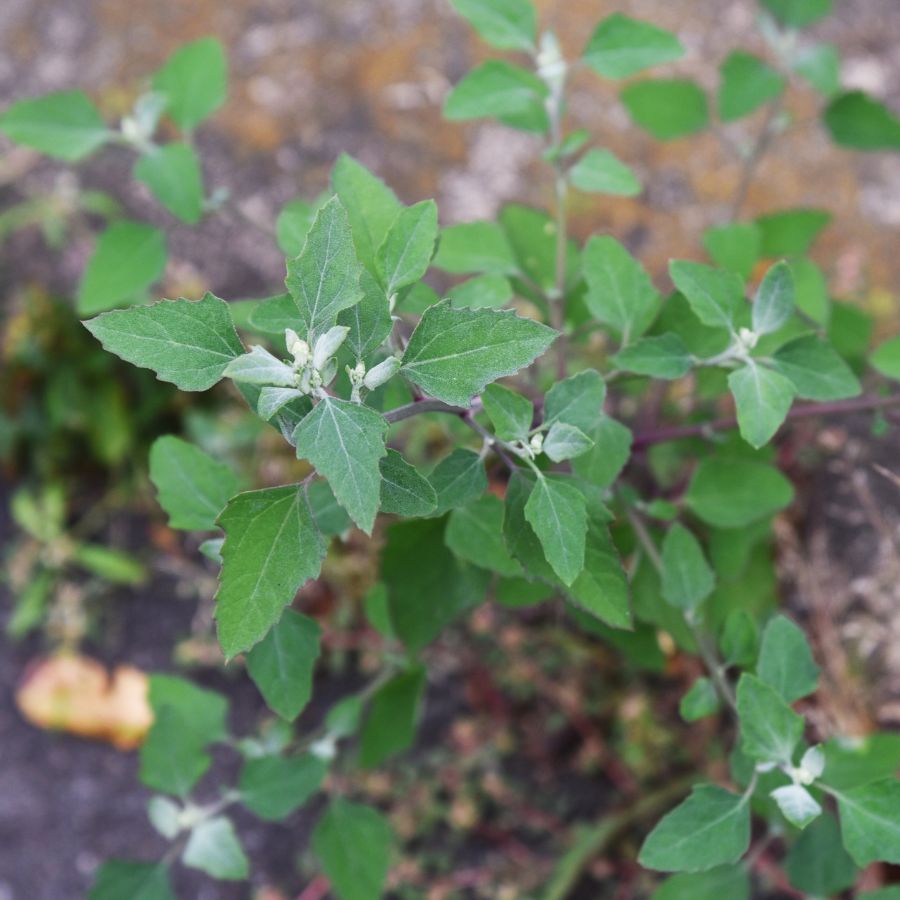
Knowing exactly what you’re picking is the most important part of safe foraging. Some edible plants have nearly identical toxic lookalikes, and a wrong guess can make you seriously sick.
Use more than one reliable source to confirm your ID, like field guides, apps, and trusted websites. Pay close attention to small details. Things like leaf shape, stem texture, and how the flowers or fruits are arranged all matter.
Not All Edible Plants Are Safe to Eat Whole
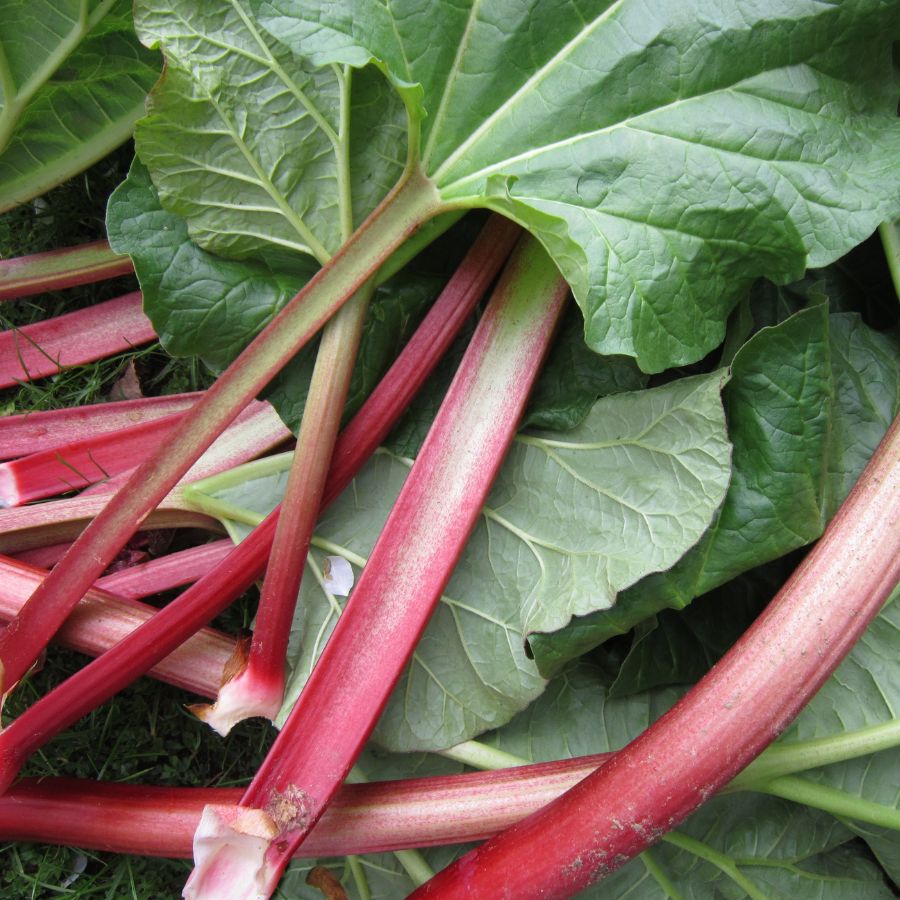
Just because a plant is edible doesn’t mean every part of it is safe. Some plants have leaves, stems, or seeds that can be toxic if eaten raw or prepared the wrong way.
For example, pokeweed is only safe when young and properly cooked, while elderberries need to be heated before eating. Rhubarb stems are fine, but the leaves are poisonous. Always look up which parts are edible and how they should be handled.
Avoid Foraging in Polluted or Contaminated Areas
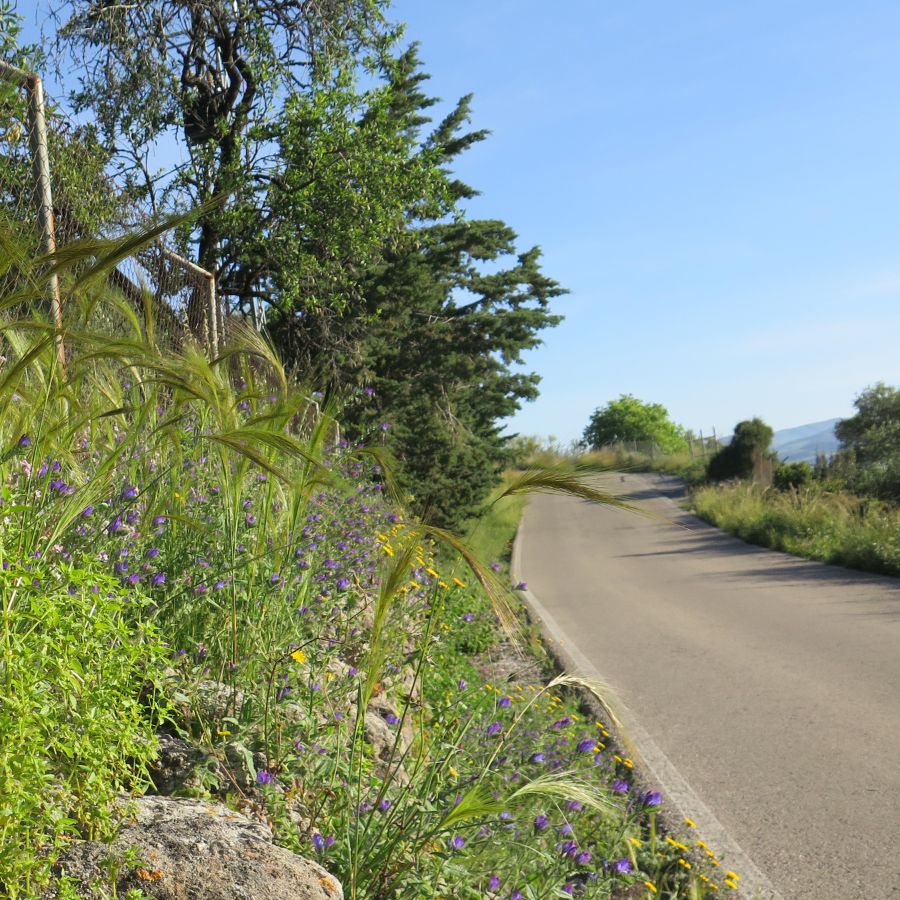
Where you forage matters just as much as what you pick. Plants growing near roads, buildings, or farmland might be coated in chemicals or growing in polluted soil.
Even safe plants can take in harmful substances from the air, water, or ground. Stick to clean, natural areas like forests, local parks that allow foraging, or your own yard when possible.
Don’t Harvest More Than What You Need
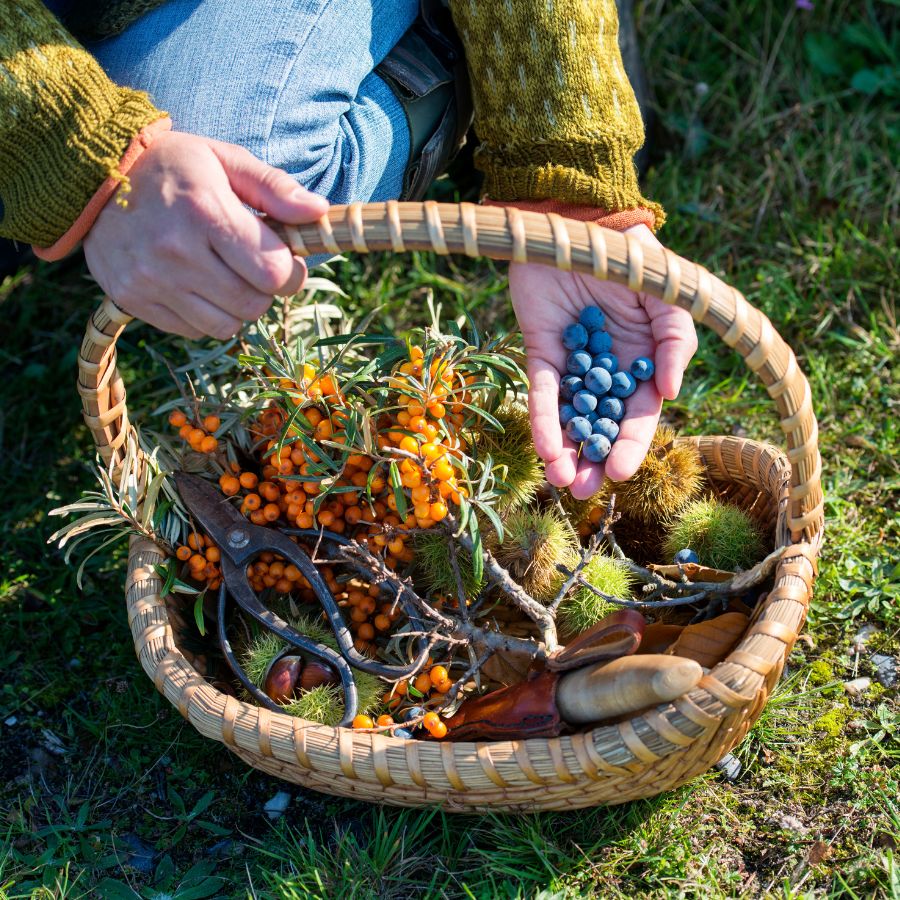
When you forage, take only what you plan to use. Overharvesting can hurt local plant populations and reduce future growth in that area.
Leaving plenty behind helps plants reproduce and supports wildlife that depends on them. It also ensures other foragers have a chance to enjoy the same resources.
Protect Yourself and Your Finds with Proper Foraging Gear

Having the right tools makes foraging easier and safer. Gloves protect your hands from irritants like stinging nettle, and a good knife or scissors lets you harvest cleanly without damaging the plant.
Use a basket or breathable bag to carry what you collect. Plastic bags hold too much moisture and can cause your greens to spoil before you get home.
This forager’s toolkit covers the essentials for any level of experience.
Watch for Allergic Reactions When Trying New Wild Foods

Even if a wild plant is safe to eat, your body might react to it in unexpected ways. It’s best to try a small amount first and wait to see how you feel.
Be extra careful with kids or anyone who has allergies. A plant that’s harmless for one person could cause a reaction in someone else.
Check Local Rules Before Foraging on Any Land
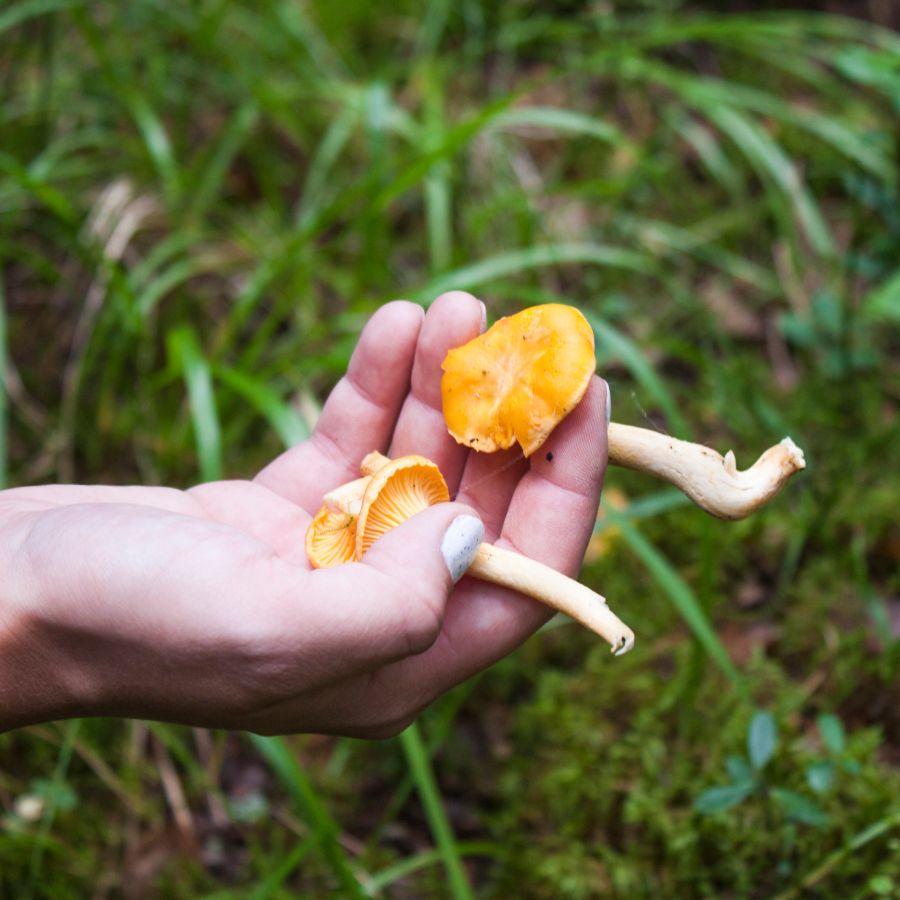
Before you start foraging, make sure you know the rules for the area you’re in. What’s allowed in one spot might be completely off-limits just a few miles away.
Some public lands permit limited foraging, while others, like national parks, usually don’t allow it at all. If you’re on private property, always get permission first.
Before you head out
Before embarking on any foraging activities, it is essential to understand and follow local laws and guidelines. Always confirm that you have permission to access any land and obtain permission from landowners if you are foraging on private property. Trespassing or foraging without permission is illegal and disrespectful.
For public lands, familiarize yourself with the foraging regulations, as some areas may restrict or prohibit the collection of mushrooms or other wild foods. These regulations and laws are frequently changing so always verify them before heading out to hunt. What we have listed below may be out of date and inaccurate as a result.
Where to Find Forageables in the State
There is a range of foraging spots where edible plants grow naturally and often in abundance:
| Name of the forageable | 3 Specific Locations |
|---|---|
| American Persimmon (Diospyros virginiana) | – Greenbrier River Trail, Marlinton area – Beech Fork State Park – Kanawha State Forest |
| Pawpaw (Asimina triloba) | – Cacapon Resort State Park – New River Gorge National Park (Glade Creek) – Coopers Rock State Forest |
| Black Walnut (Juglans nigra) | – Monongahela National Forest (Elkins area) – Holly River State Park – Cabwaylingo State Forest |
| Butternut (Juglans cinerea) | – Spruce Knob area – Audra State Park – North Bend State Park |
| Shagbark Hickory (Carya ovata) | – Seneca State Forest – Tomlinson Run State Park – Twin Falls Resort State Park |
| Pecan (Carya illinoinensis) | – Ohio River Islands NWR (Williamstown Unit) – Ritchie Mines Wildlife Management Area – Oglebay Park |
| Chickweed (Stellaria media) | – Little Beaver State Park – Chief Logan State Park – Tygart Lake State Park |
| Dandelion (Taraxacum officinale) | – Babcock State Park – Camp Creek State Park – Canaan Valley Resort State Park |
| Lamb’s Quarters (Chenopodium album) | – Ridenour Lake Park – Bee Run Recreation Area – East Lynn Lake Wildlife Area |
| Wood Sorrel (Oxalis spp.) | – Cathedral State Park – Greenbrier State Forest – Panther State Forest |
| Wild Onion (Allium canadense) | – Teter Creek Lake WMA – Stonewall Resort State Park – Bluestone Lake WMA |
| Wild Garlic (Allium vineale) | – Sleepy Creek WMA – Prickett’s Fort State Park – Mountwood Park |
| Ramps (Allium tricoccum) | – Kumbrabow State Forest – Dolly Sods Wilderness – Watoga State Park |
| Violets (Viola spp.) | – Camp Caesar area – Laurel Fork Wilderness – Cedar Creek State Park |
| Plantain (Plantago major, P. rugelii) | – Shavers Fork River trails – Barboursville Park – Gandy Creek area |
| Cattail (Typha spp.) | – Greenbottom Wildlife Management Area – Pleasants Creek WMA – Elk River Wildlife Management Area |
| Redbud (Cercis canadensis) | – Harpers Ferry National Historical Park – Brush Creek Falls Preserve – Burnsville Lake WMA |
| Wild Grape (Vitis riparia) | – Hawks Nest State Park – Beech Fork Lake Area – Bluestone Wildlife Management Area |
| Elderberry (Sambucus canadensis) | – Berwind Lake WMA – Hanging Rock Raptor Observatory – Summit Bechtel Reserve |
| Chokecherry (Prunus virginiana) | – Lost River State Park – Fox Forest WMA – Laurel Lake WMA |
| Wild Plum (Prunus americana) | – Bee Run Campground (Sutton Lake) – Greenbrier River Campground area – Big Bend Campground (Smoke Hole Canyon) |
| Sand Cherry (Prunus pumila) | – North Fork Mountain Trail – Blackwater Falls State Park (rim trails) – Spruce Lake area (near Canaan Valley) |
| Black Raspberry (Rubus occidentalis) | – Coonskin Park (Charleston) – Meadow River WMA – Pleasant Creek WMA |
| Blackberry (Rubus allegheniensis) | – Bear Heaven Campground – Kanawha State Forest (Witcher Ridge) – Stumptown WMA |
| Wineberry (Rubus phoenicolasius) | – Charleston Arboretum trails – Berkeley Springs State Park wood edges – Guyan River WMA |
| Mulberry (Morus rubra) | – Ritter Park (Huntington) – Brooke Hills Park – Capon Bridge area roadsides |
| Gooseberry (Ribes spp.) | – Otter Creek Wilderness – Greenbrier State Forest (Cabin trails) – Camp Thornwood area |
| Currant (Ribes spp.) | – Seneca Rocks picnic area – Bald Knob Trail (Cass Scenic Railroad) – Highland Scenic Highway overlooks |
| Mayapple (Podophyllum peltatum) | – Tomlinson Run trails (Spring Hollow) – Cranberry Glades Botanical Area – Camp Creek Gorge |
| Jerusalem Artichoke (Helianthus tuberosus) | – Camp Washington Carver area – Middle Island Creek (near West Union) – Camp Creek Lake shore |
| Daylily (Hemerocallis fulva) | – Weston State Hospital grounds – Watts Roost Vineyard edge – WVU Core Arboretum |
| Autumn Olive (Elaeagnus umbellata) | – John Henry Historical Park – Lake Sherwood area fields – Dry Fork fields near Hendricks |
| Japanese Knotweed (Reynoutria japonica) | – Williams River Trail – Patterson Creek wetlands – South Branch Potomac River (Moorefield) |
| Spicebush (Lindera benzoin) | – Seneca Creek Backcountry – Cacapon River Valley Trail – French Creek Game Farm trails |
| Beech Nut (Fagus grandifolia) | – Gaudineer Scenic Area – Keeney Knob trails – Stone Cliff Trail (New River) |
| American Hazelnut (Corylus americana) | – Tygart Lake trails (Yates Crossing) – Blue Bend Recreation Area – McClintic WMA |
| Common Mallow (Malva neglecta) | – Ripley City Park – Fairmont Community Garden edges – Fort Ashby Historic Park |
| Yarrow (Achillea millefolium) | – Shenandoah Valley Campground – Sleepy Creek Lake area – Beartown State Park |
| Sheep Sorrel (Rumex acetosella) | – Brushy Mountain Trail – Cranberry Wilderness meadows – Kumbrabow’s Meatbox Run Trail |
| Field Mustard (Brassica rapa) | – Rt 219 roadside near Lewisburg – Burnsville Wildlife Management Area – Wallback WMA fields |
| Garlic Mustard (Alliaria petiolata) | – Harpers Ferry trailheads – Dorsey Knob Park (Morgantown) – Deer Creek area near Glady |
| Wild Mint (Mentha arvensis) | – Laurel Fork (Middle Mountain area) – Elkins Rail Trail wetlands – Camp Creek boardwalk |
| Ground Ivy (Glechoma hederacea) | – Tygart Valley River Trail – Ravenswood City Park – North Bend Rail Trail (Petroleum area) |
| Serviceberry (Amelanchier spp.) | – Rockcliff Lake Recreation Area – Lost River Fire Tower Trail – Red Spruce Knob Trail |
| Stinging Nettle (Urtica dioica) | – Gandy Creek floodplain – Upper Shavers Fork area – Glade Creek Trail (New River Gorge) |
Peak Foraging Seasons
Different edible plants grow at different times of year, depending on the season and weather. Timing your search makes all the difference.
Spring
Spring brings a fresh wave of wild edible plants as the ground thaws and new growth begins:
| Plant (common name and Latin) | Months | Best weather conditions |
|---|---|---|
| Ramps (Allium tricoccum) | March–May | cool, moist forested slopes |
| Dandelion (Taraxacum officinale) | March–May | sunny fields and lawns |
| Chickweed (Stellaria media) | March–May | shaded, damp soil |
| Violets (Viola spp.) | April–May | partially shaded forest floor |
| Redbud (Cercis canadensis) | April–May | sunny woodland edges |
| Garlic Mustard (Alliaria petiolata) | April–June | shady trails and forest edges |
| Wild Onion (Allium canadense) | March–May | meadows and woodland borders |
| Wood Sorrel (Oxalis spp.) | April–June | lightly shaded soil |
| Mayapple (Podophyllum peltatum) | May (fruit ripens later) | moist woodland understory |
| Spicebush (Lindera benzoin) | March–May | moist woods and stream banks |
| Field Mustard (Brassica rapa) | April–June | sunny, disturbed soil |
| Ground Ivy (Glechoma hederacea) | April–May | shady forest edges |
Summer
Summer is a peak season for foraging, with fruits, flowers, and greens growing in full force:
| Plant (common name and Latin) | Months | Best weather conditions |
|---|---|---|
| Mulberry (Morus rubra) | June–July | warm, sunny areas near streams |
| Blackberry (Rubus allegheniensis) | June–August | open woods and thickets |
| Wineberry (Rubus phoenicolasius) | July–August | roadsides and clearings |
| Black Raspberry (Rubus occidentalis) | June–July | field edges and sunny hillsides |
| Wild Grape (Vitis riparia) | July–September | sunny forest edges and fences |
| Elderberry (Sambucus canadensis) | July–August | moist lowlands and field edges |
| Lamb’s Quarters (Chenopodium album) | June–August | disturbed sunny soils |
| Daylily (Hemerocallis fulva) | June–August | moist fields and ditches |
| Wild Mint (Mentha arvensis) | June–August | wet meadows and stream banks |
| Yarrow (Achillea millefolium) | June–September | open sunny fields |
| Currant (Ribes spp.) | July–August | cool shaded slopes |
| Gooseberry (Ribes spp.) | June–August | forest understory or edges |
Fall
As temperatures drop, many edible plants shift underground or produce their last harvests:
| Plant (common name and Latin) | Months | Best weather conditions |
|---|---|---|
| Pawpaw (Asimina triloba) | September–October | moist river valleys and bottomlands |
| American Persimmon (Diospyros virginiana) | September–November | open woods and fence lines |
| Hazelnut (Corylus americana) | August–September | edges of woods and fields |
| Black Walnut (Juglans nigra) | September–October | forest edges and near streams |
| Butternut (Juglans cinerea) | September–October | moist hardwood forests |
| Beech Nut (Fagus grandifolia) | September–October | upland forests |
| Autumn Olive (Elaeagnus umbellata) | September–October | old fields and roadsides |
| Jerusalem Artichoke (Helianthus tuberosus) | October–November | moist, sunny thickets |
| Wild Plum (Prunus americana) | September | forest margins and sunny clearings |
| Sand Cherry (Prunus pumila) | August–September | rocky or sandy slopes |
| Serviceberry (Amelanchier spp.) | August–September | woodland openings and edges |
| Pecan (Carya illinoinensis) | October–November | near riverbanks and bottomlands |
| Shagbark Hickory (Carya ovata) | September–October | moist forested slopes |
Winter
Winter foraging is limited but still possible, with hardy plants and preserved growth holding on through the cold:
| Plant (common name and Latin) | Months | Best weather conditions |
|---|---|---|
| Cattail (Typha spp.) | November–February | frozen marshes and wetlands |
| Plantain (Plantago major) | December–February | open disturbed ground (milder days) |
| Common Mallow (Malva neglecta) | December–February | roadsides and lawns (mild spells) |
| Ground Ivy (Glechoma hederacea) | December–February | moist woodland edges (mild spells) |
| Stinging Nettle (Urtica dioica) | February (young shoots) | moist soil near water |
| Sheep Sorrel (Rumex acetosella) | December–February | sunny pastures and field edges |
| Garlic Mustard (Alliaria petiolata) | February | shaded woodland trails (early rosettes) |
| Wild Garlic (Allium vineale) | January–March | meadows and open woods |
| Chickweed (Stellaria media) | January–March | moist lawns and disturbed soil |
One Final Disclaimer
The information provided in this article is for general informational and educational purposes only. Foraging for wild plants and mushrooms involves inherent risks. Some wild plants and mushrooms are toxic and can be easily mistaken for edible varieties.
Before ingesting anything, it should be identified with 100% certainty as edible by someone qualified and experienced in mushroom and plant identification, such as a professional mycologist or an expert forager. Misidentification can lead to serious illness or death.
All mushrooms and plants have the potential to cause severe adverse reactions in certain individuals, even death. If you are consuming foraged items, it is crucial to cook them thoroughly and properly and only eat a small portion to test for personal tolerance. Some people may have allergies or sensitivities to specific mushrooms and plants, even if they are considered safe for others.
Foraged items should always be fully cooked with proper instructions to ensure they are safe to eat. Many wild mushrooms and plants contain toxins and compounds that can be harmful if ingested.

